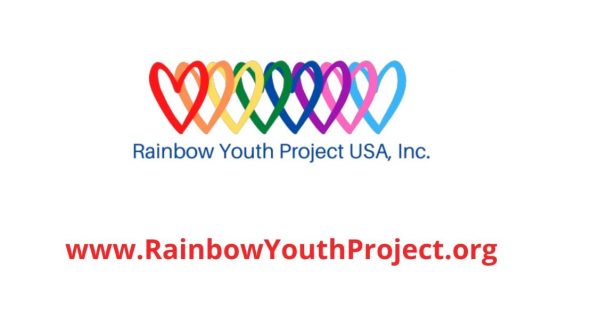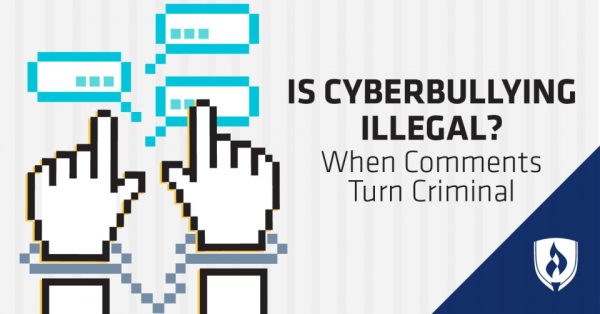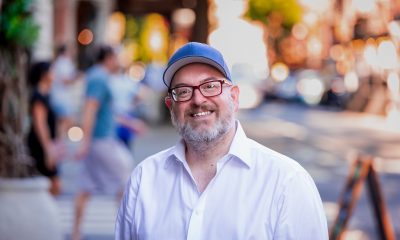Features
Social media platforms: Primary source of anti-LGBTQ+ hatred
A serious threat are those who know how to walk the fine line between first amendment rights and that defined as illegal harassment
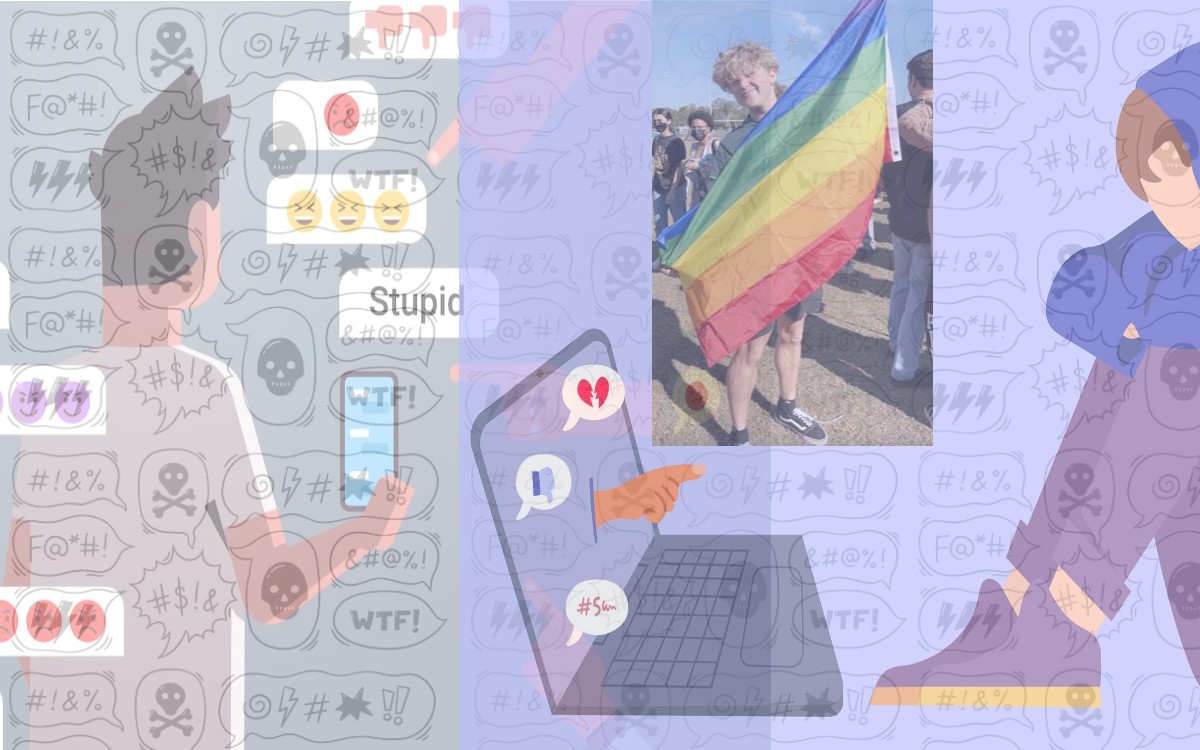
LOS ANGELES – With cyberbullying at an all-time high, all states now have laws requiring schools to respond to this type of online harassment. But are those laws working? The escalating mental health crisis amongst queer youth would suggest that no, they are not.
According to a pre-covid pandemic study conducted by stopbullying.gov, about 16 percent of students in grades 9–12 nationwide experienced cyberbullying. Dosomething.org reported that approximately 37% of young people between the ages of 12 and 17 have been bullied online- with 30% experiencing incidents more than once.
Among those are a significant percentage of LGBTQIA+ youth who are consistently targets of online bullying and hate speech. In fact, the organization says that about half of all LGBTQ+ students experience online harassment — a rate higher than their cis-gender peers .
Rainbow Youth Project
Many queer youth suffer acute mental health crises due to cyberbullying and have nowhere to turn for help and guidance. This is where Rainbow Youth Project (RYP) steps in.
“The primary purpose of Rainbow Youth Project is to promote the health safety and well-being of LGBTQIA+ young people,” Michael Garrett, Communications Manager told the Blade. “Our nationwide mental health program is our core program that provides meaningful access to free, indefinite mental health counseling to LGBTQIA+ teens who otherwise would not have access to it.”
“Cyber bullying has just gone through the roof,” Garrett said. “We get hundreds of calls every day that say ‘I don’t even want to turn my phone on when I get home because now the hate follows me home. I block and they make a new account, I block, and then they make a new account. I report it and I get told that this is not a violation.’”
Sadly, Garrett said, the need for mental health crisis intervention has quickly become overwhelming.
“This past weekend we had 741 contacts to Rainbow Youth Project between Sunday morning at 8 AM and Monday morning at 8 AM. Those were all mental health needs.”
All in, RYP receives an average of 300 calls per day – such a large number that they have had to triage their mental health care which Garrett told The Blade “is a big no no,” because often, the calls RYP receives are of youths in acute and immediate distress.
“We had a child just three weeks ago who was a trans girl from Louisiana,” said Garrett. “She had taken a very large quantity of various medications and all she wanted was somebody to speak to you while she went to sleep. We were able to do a welfare check immediately, and we were able to get her to the hospital. We were able to save her life.”
Cyberbullying Linked to Hate Crimes
Many of these calls come to Garrett and his Rainbow Youth colleagues as a result of cyberbullying, which leaves these queer youths traumatized and isolated and seeing no other recourse than taking their own lives.
Garrett shared two stories with the Blade:
“Tony Vallejo was a young man who was a gay teen. His parents were very involved with the church and he had a boyfriend at that church who was his age. That boy’s parents found their text messages and outed him. They literally emailed everyone in the church and in their community that Tony was a sexual predator and trying to make their son gay.”
“Tony ended up being attacked online because people were passing this false information along. He attempted suicide twice and had four or five hospitalizations. He was so distraught over the cyberbullying that he was undergoing that he was stabbing himself with pencils just to try to get rid of this pain.”
“All of this traveled through social media. It traveled through TikTok, Facebook, and Instagram. People were driving by the family’s house screaming ‘fag’ from their cars. The family couldn’t even go to a Walmart without people, saying ‘I saw online that your son is a sexual predator.’”
Finally, the family had to resort to leaving the state, uprooting themselves from Texas to California to save their son’s life.
“If they hadn’t moved,” said Garrett, “Tony was literally going to be a victim of his own taking.”
Christian Peacock, was another queer youth whose story went viral after RYP started working with him.
“Christian was on his front porch in his hometown in Utah hugging his boyfriend when a car was driving by and these teens started calling them all kinds of slurs. Those teens then came back and beat Christian up on his front porch. The family ran out and videotaped it. The New York Daily News reposted it, and the assailant was arrested and just a matter of 24 hours later.”
“After he was arrested, it was found that he was part of a Mormon sect. Many of that clan started posting things about Christian’s family online and calling him a liar, saying the assault didn’t happen like he said it did. This manifested into people tormenting him, very similar to the Vallejo’s, by pulling up in front of his family’s house with squealing tires, yelling slurs. The police department had to send someone to drive by their house every fifteen to thirty minutes just to make sure the family was okay all as a result of what was posted online.”
Although Christian had been hospitalized with a concussion after the filmed beating, the false rhetoric that Christian was lying about the attack continued to spread on social media. The bullying wreaked havoc on Christian’s depression as he became more and more isolated from his peers and his community at large.
When Christian’s assailant was sentenced, the judge ordered him to do community service with an LGBTQIA+ organization in Utah. This caused even more outrage amid the homophobic community, which then began to harass the organization itself online.
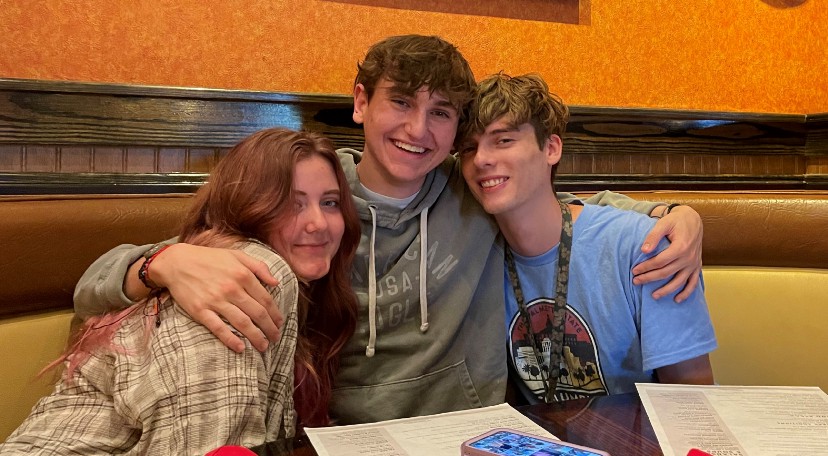
(Photo by Stefanie Peacock)
“He couldn’t go outside of his house, because people were sitting across the street waiting for him to come out,” said Garrett. “All of that harassment was a result of all the things that were being posted online.”
Alarmingly, so much of this hate speech and false rhetoric on social media could have been but was not stopped by the platforms themselves.
“All these hateful comments should have violated the TOS [Terms of Service] on Twitter, Instagram, and Facebook. Even though those things were reported, they were never removed.”
“Let’s just be honest, social media platforms do not care. They do not care,” Garrett added.
Social Media Platforms Don’t Care
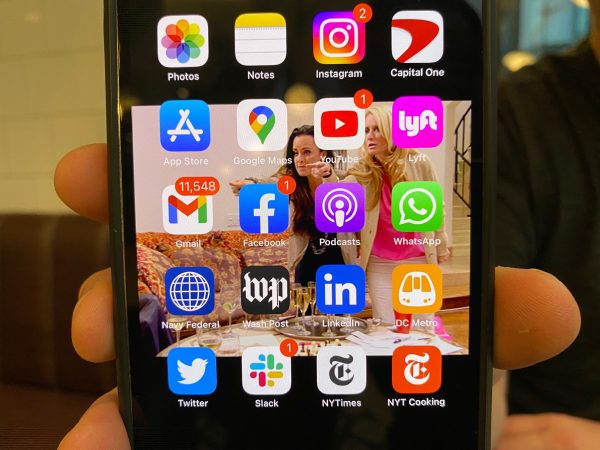
Garrett noted he recently read about a social experiment wherein a group created and submitted purposefully hateful and bigoted posts to various social media platforms as paid ads. The platforms accepted these advertisements, which used words like “groomer” and “fag.”
When the group recalled these ads, explaining that they had only submitted them to test whether the platforms would accept them, the platform representatives responded claiming that they would not actually have allowed the ads to run, despite having already accepted payment for them in advance.
It is no secret that social media has become an open playing field for hate speech. So many perfectly innocuous posts get taken down for “violating” the platform’s cryptic guidelines, while others, like the ones created for the aforementioned social experiment, run rampant and unchecked by these sites.
With so many social media users frustrated at the confusing rules of what is and is not allowed to be posted, California Gov. Gavin Newsom recently signed AB 587, authored by Assembly Member Jesse Gabriel, into law. The new bill is designed to hold social media platforms more accountable by demanding transparency of their rules and how they intend to implement them.
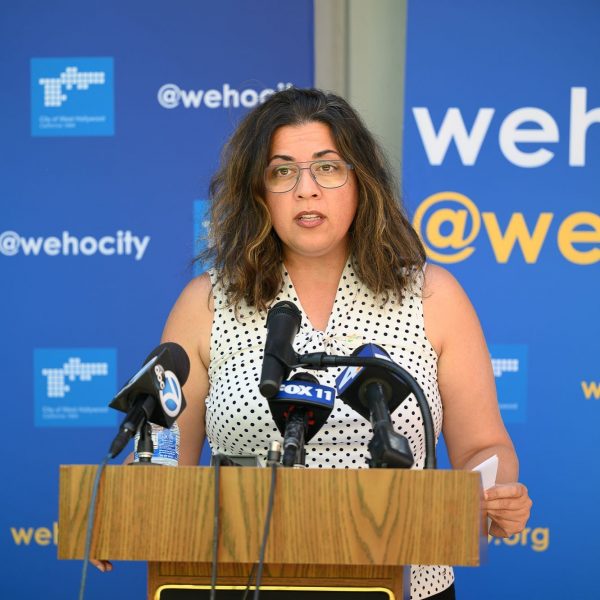
(Photo Credit: Official City of WeHo/Facebook)
In a recent interview with The Blade, West Hollywood’s first ever queer, Iranian Mayor, Sepi Shyne, explained that social media platforms need to treat online hate speech as real threats that can lead to real violence.
“We also have to reconsider our laws about what is considered inciting violence,” Shyne said, “because those laws didn’t consider social media at the time. When those laws were created, they were about people saying things in person and then asking whether or not it is probable that violence will ensue from that interaction. But now we have people on social media saying horrible things that do lead to violence.”
In addition to violence, another serious threat are those who know how to walk the fine line between what is considered first amendment rights and that defined as illegal harassment. These people are aware of those types of laws mentioned by Shyne, and actively harass and traumatize LGBTQIA+ youth to a certain point but without straying into unlawful territory.
“There is a major box chain store known across the country for its inclusivity,” Garrett told The Blade. “It is known for having a specific section for pride, rainbow shirts, rainbow bracelets, things of this nature. In the last forty-three days we have had four reports of teen trans people who have been in this store shopping in that particular merchandise section who have been verbally attacked by adults. It is almost as if these people were stalking that section of the chain’s locations to harass people who were looking at those items.”
Garrett explained that these adults avoided being charged with hate crimes by never physically assaulting or touching their targets.
“I think these people know just how far to go without going too far which tells me that they are actually putting training into this. I’m not a cop. I could be wrong. But it’s almost just too coincidental that in all four of these instances, people never physically threatened or touched, or did anything actually illegal. They were just making comments and being disruptive and possibly stalking.”
Garrett also made the connection between these verbal attacks and a particular TikToker who made it his public mission to stake out the queer section of this chain with the intent of “hunting down LGBTQIA+ people.” These videos did get removed initially, but resurfaced at a time coinciding with documented four attacks.
One of these four victims is being featured in an article in the Advocate.
“The harassment was so severe that she attempted suicide after the interaction. Someone was following her around the store, saying that she was ‘one of those freaks who was trying to sleep with children,’ calling her a pedophile and a groomer. This was a 17-year-old child. This man followed her out of that store. Like I said, we have had four kids who have called, and one who actually attempt suicide as a result of that attack. The other three were in acute crisis and they had to be met by a psychologist immediately,” Garrett said.
Sadly, there is only so much organizations like the Rainbow Youth Project can do for these victims.
“I am happy to say that while her situation was very serious and very dire, she is doing well but she is very isolated. Her parents do not allow her to leave home without one of them or another adult that they know so that whole family is really suffering from this entire 10 to 15 minute interaction. It is trauma,” he added.
Social Media Attacks on Rainbow Youth Project
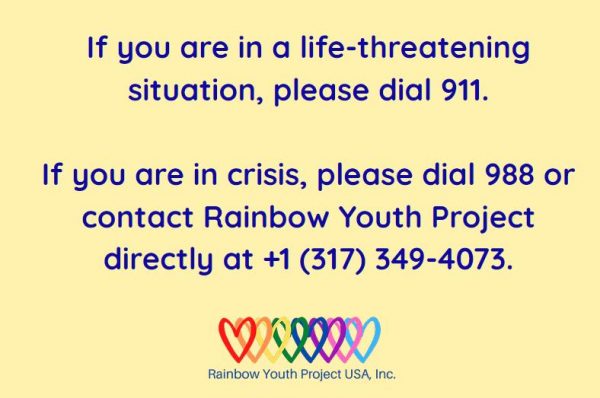
As Republican state legislators continue to pass bills stripping LGBTQ+ rights into law in GOP-led states, many parents turn to Rainbow Youth Project for things like gender affirming care, which they cannot attain in their home states.
“The second program taking up a substantial amount of Rainbow Youth Project’s resources is the transgender non-surgical gender affirming healthcare assistance program. The program advises and assists young individuals who are underinsured or uninsured by setting them up with physician consultations and continuation of care. Like their mental health program, this assistance is nationwide, benefitting states like Oklahoma where gender affirming care is illegal. In October, the program was assisting twelve youths. Now the program assists 174 youths and has a waiting list of 223,” Garrett noted.
Despite all the help and advocacy they provide for targeted queer youth, RYP itself is not safe from virulent online hate speech and threats of violence.
“We have been called groomers and pedophiles,” said Garrett. “We had an accusation a few weeks ago that we were running a sex trafficking ring of children. We also have been accused of performing surgeries on children. These allegations are absolutely not true. We offer suicide prevention and mental health help. We do not perform surgeries on children, but Moms for Liberty and [the anti-LGBTQ+] Libs of TikTok attacked us, and said that we were indoctrinating children. People read that, and then they attacked us even though these are lies. They don’t take the time to research what we do or how we do it, but they attack us because they believe what they are seeing online.”
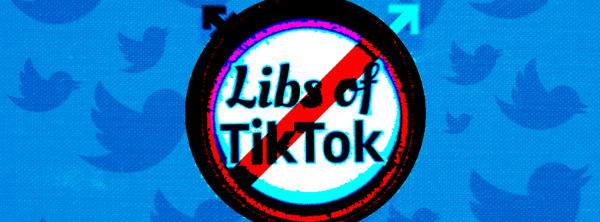
“Lance (RYP’s founder) does not take any bullshit. He served a ‘Cease and Desist‘ to the guy on his job hours after the tweet about sex trafficking posted. He also turned it over to the attorney general in the state of Minnesota where if you make an online statement that you cannot actually support, it is a crime. It’s a misdemeanor, and Lance actually told him in the letter, ‘I have reported you to the attorney general for the state of Minnesota and we will prosecute you.’ He removed the tweet immediately. We need to track these people down and serve them with these notice of intent to file litigation against them .”
Eric Nathan, a private investigator specializing in cybercrime, told The Blade that in many cases it is almost impossible to track down most cyberbullies, unless they link their handles directly to their personal emails, which many know not to do.
“Last year we had so many bomb threats that we had over 24 pride events that we had planned in June for young people that we had to cancel,” said Garrett. “We had to cancel every single one of them because the threats were so strong and they were coming from Libs of TikTok and Moms for Liberty people. It was just too risky to expose children to that.”
The online hate not only threatens youthful victims and supportive organizations, but misinforms parents who then are too frightened to seek assistance for their LGBTQ+ children.
“As you might or might not know, 50% of LGBTQIA+ kids who seek mental health help cannot get it. 20% of those kids cannot get it because their parents will not consent. So when we are dealing with parents trying to get their consent for treatment, the biggest barrier is fear because of what they have read online,” said Garrett. We hear things like, ‘I read on Facebook that you’re going to transition my son. You’re not going to be happy that he’s gay you’re not going be happy that my daughters is a lesbian. You want everyone to be trans now. You’re going to teach my son that he is trans and not gay when you take him to counseling.’”
“But all of that false narrative is coming from the information that is on Instagram, Facebook, Twitter, and TikTok that they will not remove. It’s all lies, and it’s all misinformation, and they know that, but they will not remove it and that is exactly what happened with Tony Vallejo. Moms for Liberty started feeding his mom so much nonsense. They were sending pictures of mastectomies and telling her, ‘If you take your son going to counseling, they’re going to tell him he’s trans and they’re going to start doing surgeries on him.’ This woman was so convinced that if her son participated in mental health help, that they were going to put him in genital mutilation surgery.”
As in the cases of the children they help, hate against RYP often turns into physical actions.
“We have had to have all kinds of security measures since last year just going to these extremes to protect staff. Our staff has left the office and found zip ties on their car doors. Our staff has received death threats.”
“At one point, our founder was getting in his car in front of our office and a phone call came in that said, ‘you can tell him that I just saw him get into his black car with his black and gray duffel bag. He was on his phone.’ Then the law enforcement had to get involved and had to try to find out where the threats were coming from and it’s all from stuff that they are starting online.”
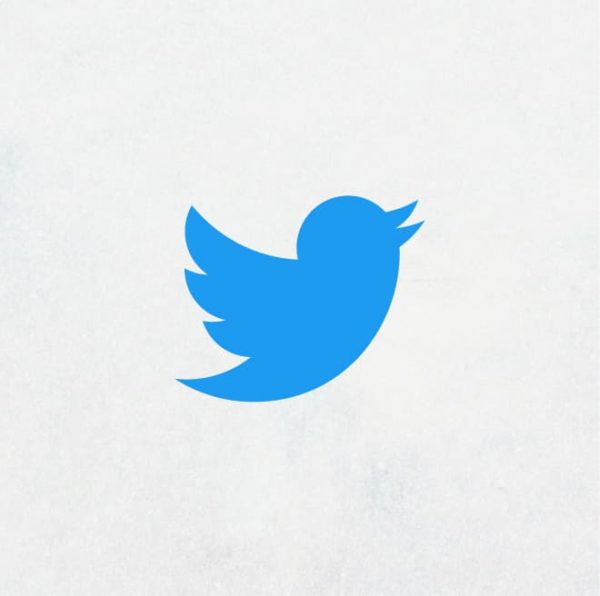
And, also as in the cases of cyberbullying they deal with every day, social media platforms continue to be unhelpful in the face of hate says Garrett.
“We submitted all the tweets that were threatening us to Twitter, and they responded by suspending our founder and president’s accounts. Eventually we got them back, but that was the response. We had threatened Twitter with a lawsuit, and that was their response sort of telling us not to push it.”
Editor’s Note: To access mental health help visit the Rainbow Youth Project website (link). RYP accepts phone calls, emails, and social media DMs.
Bars & Parties
Bear World Magazine gives the bear community a mighty roar
Richard Jones is fighting the good fight in queer subculture representation
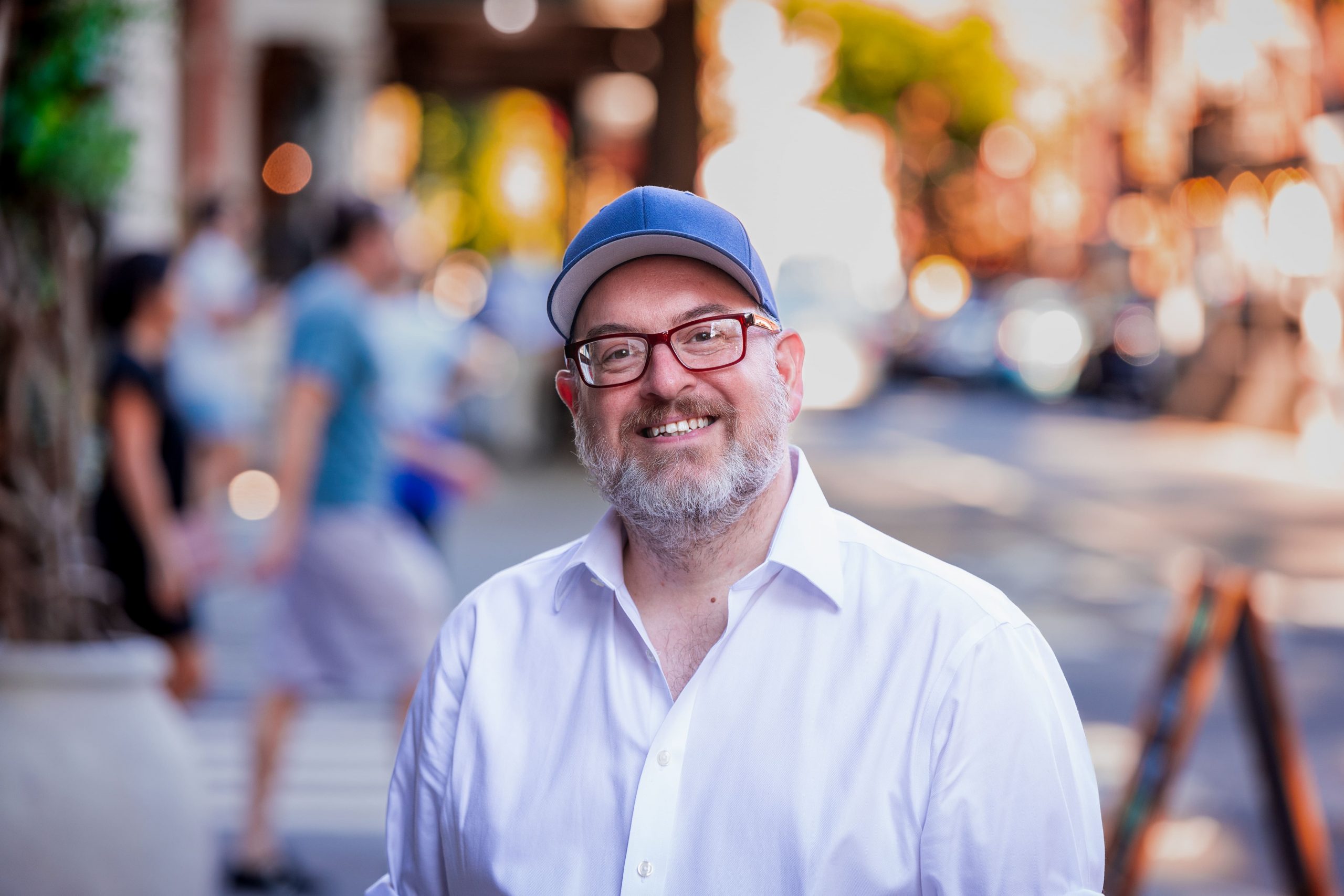
Entrepreneur and co-founder of Gray Jones Media, Richard Jones is the mastermind behind Bear World Magazine. Together with his editor, Robin Gray, they understand that their publication is needed now more than ever.
In 1979, George Mazzei wrote an article for The Advocate characterizing gay men by certain animals titled, “Who’s Who in the Zoo?” It was that article that gave voice to the chubbier, hairier, gay man — the almighty ‘bear.’
The term took wing and by the mid-1980s, gay men, who identified as ‘bears’ would gather in social and sexual settings. Feeling ousted because of body type and hairy body parts, these bear groups would congregate separate from the gay community at large, feeling safe and accepted in their own circle.
Presently, the bear community is a thriving, worldwide community with a variety of events and social groups, and the members of that sector have grown to include all shapes and sizes. Over the last decade, the bear community has gained a bigger presence in mainstream gay culture and one can spot a number of twinks at bear pool parties as well as a large contingent of bears showing off on Pride main stages. As the celebration of body types gains traction and the pressures of peak physique diminish, the segregation of the bear community and the rest of gay culture has faded.
Keeping the bear voice very much alive is Bear World Magazine, which is ready to celebrate 13 years in media. Celebrating the bear culture and all of its varying members, is at the forefront of Bear World, without diminishing the queer community that exists beyond the ‘zoo.’
Despite the challenges that chubbier men face because of societal norms and despite the challenges that queer media has faced in recent political climates — they continue to fight the fight via their online publication, podcasts, awards, nationwide events and video content.
The bear’s roar continues to represent.
We chatted with Jones as we compared notes on queer media, building a legacy and what the future of queer representation might look like.
What was the inspiration for starting Bear World?
It was all an accident. I was a member of a bear online group that is no longer around and for the life of me cannot remember the name. They asked the 30,000 members for help with ideas to save the site. Server costs were crippling, etc. I pitched them an idea to create their own magazine. I would own it but license their name and split the ad money with them. They liked the idea and asked me to pitch it more formally. I started to prepare that and then never heard from them again. I think our idea was great but wasn’t going to make enough money for them quick enough. In the end, I realized I could do it anyway and changed the name to Bear World Mag and here we are almost 13 years later.

Bear World Mag’s first cover, featuring the cast of “Where The Bears Are,” in August 2012. Photo courtesy of BWM.
What was your first exposure to the bear world as a queer man?
Funnily enough, it was a visit to Ty’s in NYC — before I really knew what Bears were. I remember seeing ‘BEAR’ as a specific chat room in Gaydar (that’s an old reference) too — but had no idea. It wasn’t until I started going to Be Your Be Yourself (BUBU), which was started by the amazing Paul Bloomer in Belfast Northern Ireland over ten years ago now, and then a bear group there that I really understood how broad the community could be and how I could fit into it.
What are some of the biggest challenges in keeping BWM thriving?
I think trying to keep it fresh, keeping it looking forward as well. The community is ever-evolving and we try to showcase that. We miss things as we are a small team, so we are always encouraging people to tell us about their events, their groups and we try to showcase as much of the global bear community as we can. We have just started to cover the Australian bear community more deeply, with a new dedicated deputy editor Luka Musicki, who is on the ground talking to the groups and helping us find local advertisers!
What are some of the biggest challenges that queer media faces in general?
I hate talking about this but at the moment it’s the hesitation of advertisers to spend with us. The recent political upheaval has meant that the big advertisers are pulling away and the small advertisers might be more hesitant to advertise because of fear of the economy. We have seen media decline since the pandemic and those of us left are finding it harder to survive.
The appetite to pay for media just isn’t there. It means we have to be leaner and adaptable. It’s why we are starting our Bear World TV content, short videos from key bear voices, showcasing different elements of the bear community. All of us are used to consuming more short-form videos, the bears too. We are very excited about its impact and how it will help stabilize Bear World Mag.
What do you hear most from your readers?
They love the hairy content! I’m serious. I think the way we present a bigger different body —although never nude — is inspiring to them. Our bears of the week who are our readers basically from all over the world, are a key part of showing the community from 21-99 in all body shapes and sizes, we are so very diverse even in this niche community.
What are some of your biggest achievements with the magazine?
Well being here almost 13 years later is the biggest achievement. It was a quick idea that has lasted through greater content, great editors and writers and just never trying to tell the community what they should be but more mirroring them, where they are at all times. I’m proud of some key interviews including Armistead Maupin.
It was a big thrill to meet him and chat with him. He gives good hugs. I’m proud of our female and trans bears that have been cover stars, I’m proud of the young bears that have found us and have said how we helped them be confident in themselves. They always came at my most difficult times and helped me to keep moving forward.

Cover of Bear World Mag featuring Armistead Maupin in 2014. Photo courtesy of BWM.
The bear community has been getting a much bigger voice and more representation in the queer world, why is that?
I think the biggest reason is that the queer community as a whole is getting more representation on mainstream TV, and the mainstream media. The dad bod and body positivity have helped our bodies be seen as attractive. It’s been great to see bears become character choices over the years across many different TV and films. I had the opportunity to interview the very bear-y straight actor Patrick Cox, who played John on “Two Broke Girls.”
I think [he is] a very ordinary representation of a bear and he was not there to be the butt of fat jokes. The “Will & Grace” reboot had Jack partnered with a bear cub. We have seen bears referenced on “30 Rock,” and even the reboot of the “Muppets” had Fozzy Bear talk about gay bears briefly. Just recently on “The Connors” the greatest Bear Icon of all time, Dan, (some would say) referenced the bear community which in a weird way was beautiful to see.
So it all comes back to representation matters. Writers and show-runners are plugged into the community and are now likely to be queer themselves. A key writer on “Saturday Night Live” is queer, so we’ve seen a lot more queer references on that show in recent times. We, of course, are thrilled to see it.
You also do events around the nation. What do you love most about the fellowship of the bear community at these events?
We do a couple of events, Key West Bear Weekend and now WOOF week also in Key West, in partnership with Island House Resort. [That’s our] cheeky plug, thanks!
I think the fellowship is the strength and growth of Bear Weeks and Bear Weekends around the country and the world. To be together and feel safe and attractive is what the queer community finds in any gay or queer bar — and us bears probably never had that. We were always the fat one or the hairy one. To head to a bear weekend and know that you will feel safe just for wearing a tank that shows off your furry shoulders is a tonic to us all.
Add in that we might actually feel attractive and flirted with, and you can see why bears flock to these events. So the fellowship follows, lifelong friends are made and it’s why these events are now starting to hit 20 or 30-year anniversaries. It’s like coming home. Walking down the street in P-town during Bear Week holding your husband’s hand without a worry is magical.
How has the bear community changed the most over the years?
I like to think it’s queerer. Bears can be masculine still, but also a little queer, maybe embrace not feeling that we have to wear plaid, but maybe a crop top and wear pink. And of course that we are more and more making space for our female sisters and trans brothers has been wonderful to see.
How can the general queer community best support the bear community?
That’s a great question. I think as long as we have space to be recognized, in any way at all and never marginalized — that’s all we ask. I think the bear community in turn should show up to support the fuller queer community too. Which I think we are. We always have more work to do, but I think the recent uproar about a bear campsite not welcoming trans bears and then the wider bear community rejecting that and then boycotting that camp, showed who we are at heart. It makes me very proud.
There is much division in the nation right now, also within the queer community. Why is it so important to celebrate the “bear” label and all that subcategories it comes with?
I think this is a time the queer community is able to and should come together, we realize collectively what we have been fighting for these last 50 or more years since Stonewall. We are used to being bullied, so I think on the whole we have thick skin. In celebrating the ‘bear’ label, I like to think we are encouraging of any group to celebrate who they are. Many more subgroups under the queer umbrella are much more visible now, look at how the rainbow flag has evolved, we will continue to as well. Our collective strength is not diminished if we are different from each other in some way, basically, that’s the human race. We need to fully embrace it and make room for all.
What have you learned most about yourself from being the Publisher of Bear World?
Oh gosh, that you can’t stand still. That media is ever evolving as much as we are as people. You have to be resilient and prepared to change because the world both in humanity and in commerce, will change and evolve and you cannot stand still or it will pass you by.
What can we look forward to this year from Bear World?
Well, we are about to start planning for the Bear World Magazine Awards Year three which will be in N.Y.C and part of the Urban Bear Weekend, and the red carpet celebration will be at ReBar. We are really excited about our new video content — which we think will be transformative for us and for the community. More Great covers, so much more content about the Australian bear community too — that’s truly exciting to dive into.
What is your message to the queer community?
Stay strong, find and support the community you are in or want to be part of and live with as much joy as you can because that pisses the haters off way more than our anger. But keep the anger too. We need that as well to fuel our never-ending fight.
Follow everything at Bear World Magazine.
Features
Meet the new co-presidents of the NLGJA LA Chapter
The National Lesbian Gay Journalists Association’s LA Chapter under new leadership
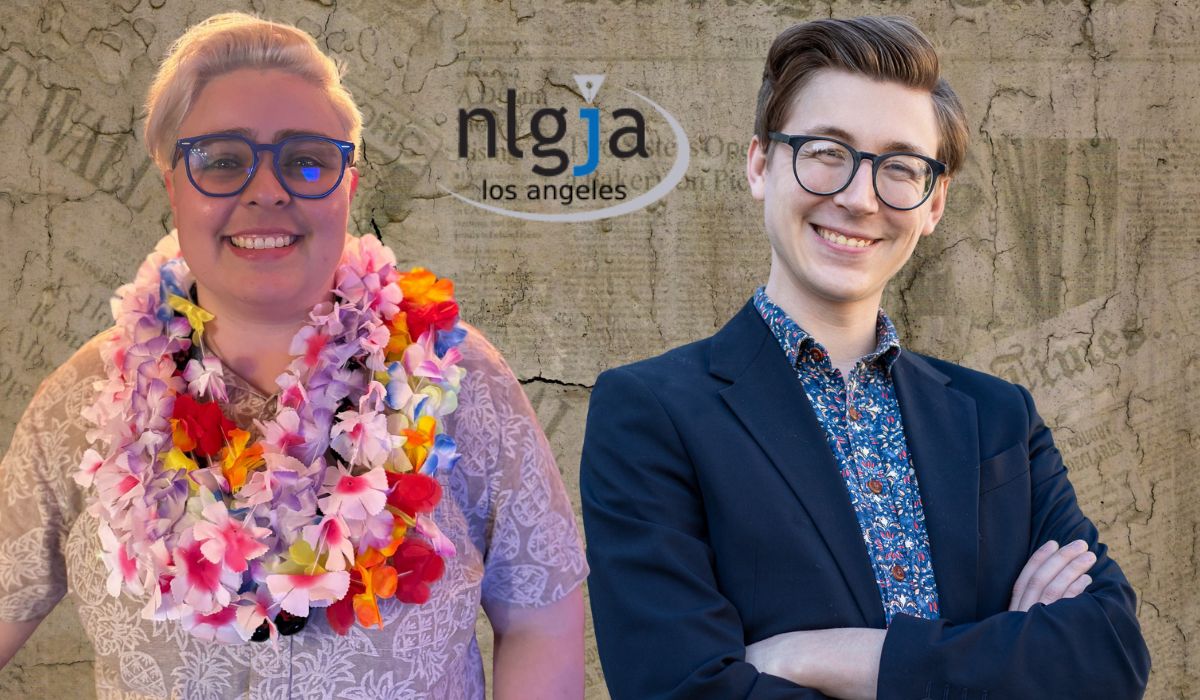
An award-winning documentary filmmaker and a news producer make up the dynamic duo who now run the Los Angeles chapter of the NLGJA: The Association of LGBTQ+ Journalists.
NLGJA is a nationally recognized affinity group meant to unite journalists from dozens of different industries, who identify as members of the LGBTQ community.
The national chapter recognizes the work and contributions of LGBTQ journalists who work to further the narratives by queer, trans and gender non-conforming people.
Hansen Bursic, 27, pisces, is one half of the dynamic duo who now run the L.A chapter.
Katie Karl, 30, gemini, freelance news producer and writer, forms the other half.
Last year, Bursic and Karl took over as interim co-presidents and have been able to grow the local chapter to include a diverse and wide range of voices on the Board of Directors and on the membership list.
The chapter has hosted a long list of events that include collaborations with other local and national organizations with roots in Los Angeles, such as GALECA: Society of LGBTQ Entertainment Critics and the Asian American Journalists Association.
It became the first time in the Los Angeles chapter’s history that there was such a shift in leadership, with two people taking over the leading role.
“It was just too big of a job for one of us to do, especially in rebuilding. So we decided to get together and come on as co-president’s, which was recommended by the national president, Ken Miguel,” said Karl.
When it comes to the chapter’s mission, Bursic says it’s a two-fold goal.
“We want to build a sense of community for queer and trans journalists in Southern California and we also want to advocate for those journalists any chance we get by building the spaces where journalists can meet each other, breaking down barriers and trying to reduce gatekeeping of opportunities for our members so they can thrive and find a place in Southern California newsrooms,” he said.
Many of the events that are hosted by the NLGJA LA Chapter are free and open to the general public through RSVP. One of the common misconceptions the affinity group faces, is that many people feel as though their work may not directly correspond to the work pursued by current members of the group. However, that is not the case.
“Together, we really want to make sure that everyone feels included,” said Karl. “I’m in broadcast and Hansen is in documentary and together we really push to make sure that no matter what kind of journalist you are, you know there is a space for you and you feel welcomed.”
The organization welcomes members and people to attend their public events, who work in industries that are adjacent to the work journalists do and those who might just be creatives with multi-hypenated titles.
Bursic has a full-time day job in communications for a nonprofit, but his creative work extends far beyond his work in communications. His energy and passion lie in documentary filmmaking. Bursic recently directed and produced “Trans Heaven Pennsylvania” (2024). The 12-minute documentary is about the 2010s in Pennsylvania, where each year, a group of trans women would take over a small American town for a week-long party. The documentary was funded through the Creative Hope Initiative, an incubator for emerging LGBTQ filmmakers sponsored by Traverse32 and Outfest Film Festival.
The film most recently screened internationally in London, at the Bethnal Green Working Men’s Club. Its next screening will be at the Grandview Theater Drafthouse & Cinema in Columbus, Ohio on May 3rd.
Bursic has a notable list of accomplishments, including making the 30 under 30 list at Temple University in 2023. He has also been named a DOC NYC Documentary New Leader, has had a spot in the Ford Foundation Rockwood Documentary Leadership Fellowship and Sundance Film Festival Press Fellowship.
Karl was born and raised in the Greater Los Angeles area, is a dedicated news producer with extensive experience in live news coverage and team coordination. Currently a freelance writer and producer at KABC, she brings years of experience from her work at stations like KPNX, KHQ and KEYT.
Karl, says the experience of connecting with the members more, has been really rewarding.
“Going forward, my goal is to grow the chapter in name and recognition,” said Karl. “I want our [reach to get] across other organizations in other areas of journalism and that’s why I joined the board in the first place.”
Features
New mayor Chelsea Byers, hopes to make WeHo a model city for others to follow
She has big plans, but can they withstand the Trump administration?

West Hollywood’s new mayor Chelsea Byers has lofty ambitions to make the 1.8-square-mile city, a model for other cities in the region.
She hopes to deal with compounding crises of housing affordability, traffic congestion, climate change and a new federal government that’s slashing programs and services many people – especially LGBTQ people – rely on.
But can Byers, who was elected to city council in November 2022 and selected as
mayor by council in January, really make a difference during her one-year stint in the
city’s top job?
Byers believe she can.
On one of the biggest challenges facing West Hollywood residents – housing
affordability – Byers fully embraces more housing development.
“For 80% of the city of West Hollywood including myself, who are renters, accessing a
home that is affordable is a very difficult thing. And the way that cities can address that
cost is frankly, by building more housing,” said Byers.
Byers also says she fully accepts the state’s regional housing needs assessment, which
assigned West Hollywood a target of building 3,933 new housing units in the next eight
years. That’s a tall order, given the city is currently only home to about 38,000 people.
“We’re going to have to look at this sort of invisible cap that we put across the town to
increase the capacity in a way that is equitable, that creates more opportunity for
different types of housing to be built. We wouldn’t want all of this rezoning to help us
lead to more one-bedroom apartments, when we know that the future of the city is also
accommodating more families,” said Byers, noting that queer families also struggle to find
homes in West Hollywood.
Those housing targets also dovetail with the city’s long-standing ambition to have
Metro’s K-Line extended through West Hollywood, Byers says.
But even if West Hollywood meets its targets, it’ll only be a small drop in region that
studies estimate needs to build more than 600,000 units of affordable housing. Still,
Byers says West Hollywood can lead by example and get buy-in from the other cities in
LA County to help solve the affordability crisis together.
“I believe that our values can be extended to these other places and help move them
actually in big ways,” said Byers.
Those values necessarily include West Hollywood’s historic diversity and inclusivity of
its LGBTQ+ and immigrant communities, both of which are feeling ill at ease from the
federal government’s attacks.
“I think it goes above and beyond the fear-mongering and outright assaults that the
current federal administration’s lobbying at the LGBTQ community. It’s the real
dismantling of funding and structures that existed at the federal level to enable a lot of
the social service programming that our LGBTQ community members rely on,” said Byers. “That is the biggest thing that we feel right now when I’m asked as a city leader,
how are we impacted?”
The city is responding to this looming threat through its own funding process.
“We’re at the start of a three-year cycle that determines how, which organizations, we
invest our $7.8 million social service budget. To have these two moments happening at
the same time gives the city a tremendous opportunity to step up to whatever extent we
can,” she said, noting that programs for sexual health care, HIV programs, and aging
in place are particular priorities.
“Part of what I’m doing is creating funding that is accessible and available in more rapid
ways than our three-year cycle. Because once the three-year cycle has closed its door,
then that is it. One of those tools is a micro grant program that is specifically dedicated
towards Innovative or programming that that is needed,” Byers said.
Part of the response is also ensuring that West Hollywood remains a beacon for LGBTQ
people not just in Los Angeles, but across the country and around the world.
“You’ll see us as the city not back down from our investment in programs like Pride
which are world-class events,” she said. “For us, this is the thing that matters. And
we’re willing to make the additional investments in the public safety resources to make
sure that it’s going to be a safe event.
“I think a lot of our community members have always felt like they are a target already,
and it hasn’t stopped anyone from doing their thing. In fact, if all eyes are watching, then
we better give them a good show, has been our attitude.”
Earlier this month, city council voted to officially designate the Santa Monica strip
between La Cienega and Doheny as the Rainbow District, with a dedicated budget to
improve and promote the area as a destination. The area will soon see new street pole, banners, utility wraps, murals, and the West Hollywood Trolley bus will have service
extended to Thursday nights to help promote business along the strip.
Byers says the city is also looking at reducing red tape around how business spaces are
licensed to help revitalize the area.
“We’ve often said that West Hollywood is a model for how it gets done,” said Byers. “It’s
such a beautiful moment for us to sort of pivot our focus locally and remind ourselves
that cities are about quality of life, and making sure that we can be an inclusive city.”
Features
Los Angeles Blade kicks off Free Community Event Series with an informative political panel of government and advocacy group leaders
Time To Get Informed, Time To Resist will be hosted by The Abbey on Saturday, April 19th at 10 am, as an open forum to present the current political climate as it affects SoCal for the queer community and beyond.

Time To Get Informed, Time To Resist will be hosted by The Abbey on Saturday, April 19th at 10 a.m., as an open forum to present the current political climate as it affects SoCal for the LGBTQ community and beyond.
In its commitment to be a thriving resource for the SoCal community, the Los Angeles Blade, in partnership with Roar Resistance, will present its first free community event. The Time To Get Informed, Time To Resist panel will include government and advocacy group leaders who will discuss political news regarding the LGBTQ community and beyond, as it affects residents and business owners in California. The panel will also share different ways the community can activate and get involved. The event will conclude with a Q&A session.
The panel will be moderated by non-profit activist Michael Ferrera, representing Roar and will include Mayor of West Hollywood, Chelsea Byers; Jorge Reyes Salinas, Communications Director of Equality California; Abbe Land, former Mayor of West Hollywood and Co-Chair of Roar, Chris Baldwin; NAACP LGBTQ+ Committee Chair and Nico Brancolini, Political Vice President for Stonewall Democratic Club.
“We need to focus on the real issues to effectively resist. This forum will serve to educate concerned citizens and help them act locally to achieve this goal,” said Ferrera.
Join us for this free event on Saturday, April 19th at 10 am at The Abbey.
For more information, contact [email protected]
Features
Finding love in queer Los Angeles with matchmaker Daniel Cooley
Is it hard to date in queer Los Angeles? We do a deep dive into finding love with one of the community’s most in-demand matchmaker.
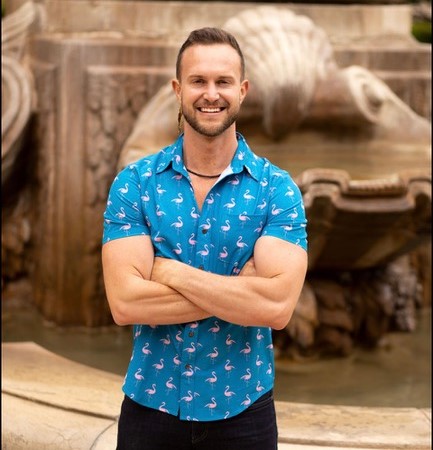
For those of us gay singles in Los Angeles, we know that dating can be difficult. In addition to all the usual dating issues, the queer community also has to deal with body issues, open relationships and hookup apps. Even with a large population of queer folk, trying to find love in Los Angeles can often seem futile. Is it possible to find love in today’s tech age?
Enter professional matchmaker Daniel Cooley, co-owner of Best Man Matchmaking, on a mission to help LGBTQ+ folks find real love and long-term commitment. You may have seen him see him pop up on TV, or may have heard about his packed singles mixers.
He and his full team (which even includes an astrologer and stylist) have a system that is tried and true. He is fully in tune with the challenges that queer singles face. We sat and chatted about it all—dating apps, monogamy, red flags, first dates, and more!
How did you get into the world of matchmaking?
A decade ago I appeared on the reality show “Millionaire Matchmaker” as a match for underwear designer Andrew Christian. I remember looking up to Patti Stanger’s ability to help singles understand the reasons why they might be single—she was so fierce and fabulous. Around that same time, I had also started a nonprofit focused on HIV-related needs. Within that non-profit, I helped build a large social network and club—made up mostly of gay, bi, or queer men. People would constantly ask me if I knew anyone in the group who was single.
I became known as the “divine connector,” always linking people to opportunities—whether it was a job, a new friend, or a date. I curated tons of long-term relationships, marriages, and lasting friendships. Years later, when I began to sell real estate, my single clients would often ask if I knew anyone they could potentially share their new home with.
That’s when I reached out to the only gay matchmaker I knew at the time, Mason Glenn, who used to run The Gay Matchmaking Club in Los Angeles. He introduced me to Anthony Canapi, who was working for a local matchmaker and eventually founded “Best Man Matchmaking”—working with him as a recruiter and matchmaker. Now I am the co-owner and CEO of “Best
Man Matchmaking.”
In your opinion, what are the biggest challenges today in dating in the LA
queer community?
One of the biggest challenges with dating in the queer community is that many people haven’t done the inner work. Instead of connecting over shared morals, values, interests, and genuine connection, a lot of guys—especially those struggling with low self-esteem—are constantly chasing the next best or hottest thing.
I can’t tell you how many times I’ve tried to help men be more realistic with their expectations, but the response is often, “Well, he hooked up with me on Grindr, so why wouldn’t he date me?” The truth is, just because someone hooks up with you doesn’t mean they want to build a relationship with you. Swipe culture, hookup apps and social media have made dating more difficult—not just in the queer community, but across the board. Add to that
the trauma and insecurities many gay men are still working through, and it becomes even harder. Rejection from society is one thing, but rejection from within our own LGBTQ community—whether in dating or just trying to make friends—can be deeply painful. I hear horror stories all the time from gay men who feel consistently shut out by the very people they’re trying to connect with.
At what point should people turn to matchmaking to find a possible match?
There’s really no right or wrong time to turn to a matchmaker—but we recommend you begin the process before you think you’re ready. Some men wait until they are completely frustrated and exhausted dating on their own and that’s usually too late. You want fresh eyes and an open heart getting the process started with your matchmaker, not a jaded outlook.
Most of the clients we represent hire us because they value privacy and have a clear idea
of who they seem themselves with, coupled with the ongoing inner work of understanding what they have to offer their partner. And I’m not talking about physically or financially – the clients we place in relationships the fastest are the ones who know themselves really well. Did you know that recent studies show people are spending an average of 27 to 45 hours a month on dating apps? That seems unhealthy to me.
I love when my clients tell me that working with us feels like meeting someone “the organic way.” Like they are being introduced to a great match through a trusted friend. Hiring a matchmaker is like having a close friend who knows you really well and has access to a network of high-quality, relationship minded men. It’s that simple.
What are the biggest factors that you consider in matching people up?
Our matchmaking is based on 4 core concepts:
Morals & Values:
We look at core beliefs—how someone lives their life, what they stand for, and how they treat others. Shared values create long-term compatibility.
Interests & Lifestyle:
Do they enjoy the same things? Travel style, social life, routines—these everyday details matter when building a life together.
Sexual Compatibility:
This is especially important for gay men. Desire, preferences, and position in the bedroom. You can’t leave this out because it can make or break a connection.
Relationship Intentions:
We match people based on where they are emotionally and what kind of
relationship they’re ready for—not just who they’re attracted to.
What are some red flags that someone should never ignore?
There are two main red flags we screen for in matching our clients. Unclear communication is a major red flag. It’s one thing to be busy, but if they’re taking days to reply or you’re always the one initiating plans, that shows a lack of effort. Don’t expect that to magically change—poor communication doesn’t improve unless the person is actively working on it.
If someone says they are not sure what they want out of a relationship or connection, this is another red flag for us. For example, if they say they’re open to a relationship “if it happens,” but aren’t clear about wanting something long-term—believe them. Take their words seriously and move on. It’s better to invest your time in someone who knows what they’re looking for.
In your opinion, what would be a good first date?
A great first date involves doing something you genuinely enjoy—whether it’s trying out a new restaurant, hiking a trail you’ve been meaning to explore, or visiting a museum you’ve had your eye on. If your date enjoys it with you, there’s a good chance you’ll naturally connect. We’ll curate a first date for our clients that reflects their lifestyle, hobbies, and life stage.
What are the biggest mistakes people make when going on a date?
There’s one that we look out for.
The biggest mistake is not staying present. People often talk too much about themselves out of nervousness, instead of asking questions and getting to know their date. A common slip-up is bringing up an ex or sharing recent drama in their life. Leave the drama at the door and focus on enjoying the person in front of you.
It seems that monogamy has become less popular in relationships. Is this
true?
Monogamy is still very popular. Over 80% of the people who reach out to us are looking for a monogamous relationship. The rest may be open to something more flexible, like “monoga-mish”—meaning they’re in a committed relationship but open to exploring non-monogamy down the line—or they’re simply open-minded about different dynamics.
Our clients are men who are looking for the same kind of companionship many people want: a long-lasting relationship, emotional connection, and a true partner to build a life with.
Can open relationships work?
Absolutely! The one thing that’s absolutely necessary for any relationship to work— trust. The only way to build trust is to communicate your needs clearly.
If you’re in an open relationship and you’re sneaking around sleeping with everyone without being honest with your partner, chances are it’ll never work out. But if you’re transparent, if you let your partner know you love them and your needs also include connection with others—and they’re comfortable with that—then there’s no reason it can’t work.
We know the world of apps has changed the dating scene. Is it possible to
meet a quality date from an app?
Definitely.. But unfortunately, it’s more a matter of luck and timing to meet someone who’s actually relationship-ready, emotionally stable, financially secure, and checks most of your boxes.
You can meet your match anywhere! We encourage our clients not to put all their eggs in one basket. Many leave the apps on their own because they’re tired of wasting time with people who aren’t as serious about dating as they are. But others see the value in putting themselves out there in lots of different ways and love having our support while swiping.
What’s the best piece of advice you can give single people who are looking
for a relationship in Los Angeles?
People are craving touch, connection, and love. Try approaching more people you find attractive in real life—whether it’s at the store, the gym, or a social event. Be bold and courageous—people find that attractive. It’s easy to get rejected online, but most people are tired of the apps and are ready for something more real.
This might be an unpopular opinion, but I’ve found that people in LA can be flaky and passive-aggressive.
I say: be direct. Let people know what you want. If it’s not a match, just be honest and let them know. Don’t lead them on, or ghost them.
What do you love most about matchmaking?
Matchmaking is both the most rewarding job I’ve ever had and the most challenging. My favorite part of being a matchmaker is when a client is genuinely excited and hopeful about someone they just met through us. It happens everyday. There’s nothing more rewarding than supporting someone get closer to finding the person they want to spend their life with. It’s priceless and makes all the hard work worth it.
What have been the biggest things you’ve learned in matchmaking?
Being selective about emotional compatibility and shared values is healthy and critical if you’re serious about meeting someone—but being overly picky about things like looks or having the “perfect body” doesn’t serve anyone long-term.
What is your message to the single queer community of Los Angeles?
Do the inner work. Ask yourself if you’re truly being the person you want to date. If not, what unhealed emotions or past experiences are holding you back? The moment you begin that work, you open yourself up to deeper, more meaningful connections.
Stay tuned for Daniel’s new love and dating Los Angeles Blade column, coming soon!
For more information, check out BestManMatchmaking.com
Features
Tristan Schukraft speaks on keeping queer spaces thriving
The new owner of the Abbey continues to expand to protect queer spaces

Like the chatter about Willy Wonka and his Chocolate Factory, the WeHo community started to whisper about the man who was going to be taking over the world-famous Abbey, a landmark and part of history in Los Angeles’ queer nightlife. Rumors were put to rest when it was announced that entrepreneur Tristan Schukraft would be taking over the legacy created by Abbey founder David Cooley. All eyes are on him.
For those of us who were there for the re-opening of The Abbey, when the torch was officially passed, all qualms about the new regime went away as it was clear the club was in good hands and that the spirit behind the Abbey would forge on. Cher, Ricky Martin, Bianca del Rio, Jean Smart, and many other celebrities rubbed shoulders with veteran patrons, and the evening was magical and a throwback to the nightclub atmosphere pre-COVID.
The much-talked-about purchase of the Abbey was just the beginning for Schukraft. It was also announced that this business impresario was set to purchase the commercial district of Fire Island, as well as projects launching in Mexico and Puerto Rico. What was he up to? Tristan sat down with us to chat about it all.
“We’re at a time right now when the last generation of LGBT entrepreneurs and founders are all in their sixties and they’re retiring. And if somebody doesn’t come in and buy these places, we’re going to lose our queer spaces.”
Tristan wasn’t looking for more projects, but he recounts what happened in Puerto Rico. The Atlantic Beach Hotel was the gay destination spot and the place to party on Sundays, facing the gay beach. A new owner came in and made it a straight hotel, effectively taking away a place of fellowship and history for the queer community. Thankfully, the property is gay again, now branded as the Tryst and part of Schukraft’s portfolio with locations in Puerto Vallarta and Fire Island.
“If that happens with the Abbey and West Hollywood, it’s like Bloomingdale’s in a mall. It’s kind of like a domino effect. So that’s really what it is all about for me at this point. It has become a passion project, and I think now more than ever, it’s really important.”
Tristan is fortifying spaces for the queer community at a time when the current administration is trying to silence the LGBTQ+ community. The timing is not lost on him.
“I thought my mission was important before, and in the last couple of months, it’s become even more important. I don’t know why there’s this effort to erase us from public life, but we’ve always been here. We’re going to continue to be here, and it brings even more energy and motivation for me to make sure the spaces that I have now and even additional venues are protected going in the future.”
The gay community is not always welcoming to fresh faces and new ideas. Schukraft’s takeover of the Abbey and Fire Island has not come without criticism. Who is this man, and how dare he create a monopoly? As Schukraft knows, there will always be mean girls ready to talk. In his eyes, if someone can come in and preserve and advance spaces for the queer community, why would we oppose that?
“I think the community should be really appreciative. We, as a community, now, more than ever, should stand together in solidarity and not pick each other apart.”
As far as the Abbey is concerned, Schukraft is excited about the changes to come. Being a perfectionist, he wants everything to be aligned, clean, and streamlined. There will be changes made to the DJ and dance booth, making way for a long list of celebrity pop-ups and performances. But his promise to the community is that it will continue to be the place to be, a place for the community to come together, for at least another 33 years.
“We’re going to build on the Abbey’s rich heritage as not only a place to go at night and party but a place to go in the afternoon and have lunch. That’s what David Cooley did that no others did before, is he brought the gay bar outside, and I love that.”
Even with talk of a possible decline in West Hollywood’s nightlife, Schukraft maintains that though the industry may have its challenges, especially since COVID, the Abbey and nightlife will continue to thrive and grow.
“I’m really encouraged by all the new ownership in [nightlife] because we need another generation to continue on. I’d be more concerned if everybody was still in their sixties and not letting go.”
In his opinion, apps like Grindr have not killed nightlife.
“Sometimes you like to order out, and sometimes you like to go out, and sometimes you like to order in, right? There’s nothing that really replaces that real human interaction, and more importantly, as we know, a lot of times our family is our friends, they’re our adopted family.
Sometimes you meet them online, but you really meet them going out to bars and meeting like-minded people. At the Abbey, every now and then, there’s that person who’s kind of building up that courage to go inside and has no wingman, doesn’t have any gay friends. So it’s really important that these spaces are fun, to eat, drink, and party. But they’re really important for the next generation to find their true identity and their new family.”
There has also been criticism that West Hollywood has become elitist and not accessible to everyone in the community. Schukraft believes otherwise. West Hollywood is a varied part of queer nightlife as a whole.
“West Hollywood used to be the only gay neighborhood, and now you’ve got Silver Lake and you’ve got parts of Downtown, which is really good because L.A., is a huge place. It’s nice to have different neighborhoods, and each offers its own flavor and personality.”
Staunch in his belief in his many projects, he is not afraid to talk about hot topics in the community, especially as they pertain to the Abbey. As anyone who goes to the Abbey on a busy night can attest to, the crowd is very diverse and inclusive. Some in the community have started to complain that gay bars are no longer for the gay community, but are succumbing to our straight visitors.
Schukraft explains:
“We’re a victim of our own success. I think it’s great that we don’t need to hide in the dark shadows or in a hole-in-the-wall gay bar. I’m happy about the acceptance. I started Tryst Hotels, which is the first gay hotel. We’re not hetero-friendly, we’re not gay-friendly. We’re a gay hotel and everyone is welcome. I think as long as we don’t change our behavior or the environment in general at the Abbey, and if you want to party with us, the more than merrier.”
Schukraft’s message to the community?
“These are kind of dangerous times, right? The rights that we fought for are being taken away and are being challenged. We’re trying to be erased from public life. There could be mean girls, but we, as a community, need to stick together and unite, and make sure those protections and our identity aren’t erased. And even though you’re having a drink at a gay bar, and it seems insignificant, you’re supporting gay businesses and places for the next generation.”
Features
Drag Race’s Honey Davenport New Fashion Line Is Making A Statement
Introducing Honey’s Hose: The World’s FIRST Drag and Black Queer Owned Inclusive Hosiery Brand by RuPaul’s Drag Race Legend Honey Davenport

Powerhouse drag performer, musician, DJ, activist and Drag Race alum Honey Davenport can now add entrepreneur to her long list of titles. A proud member of the leather community and fierce advocate for the LGBTQ+ and BIPOC communities is combining art, sensuality and fashion with her debut business — Honey’s Hose.
Developed alongside her best friend Saul Williamson, Honey’s Hose offers a wide variety of high-quality hosiery specifically designed for all skin tones, body sizes and budgets. Their mission is to empower individuals through style, comfort and confidence, celebrating self-expression.
Honey’s Hose will also establish the Honey’s Heaux Artist Fund to help emerging drag artists, enabling them to access the perfect hosiery for their performances.
After spending time crowdfunding, attending business seminars and accelerator programs, the line officially launched this weekend with a huge drag queen bash in Palm Springs. We caught up with Honey in between celebrating to talk about her new venture, the power of sexuality, supporting the Black and drag communities and what the future has in store.
Why has it taken so long to get drag queens and diverse body sizes represented in the hosiery industry?
Honestly, it’s baffling. For decades, the hosiery industry has clung to a very narrow, outdated ideal of beauty. It’s a reflection of a larger societal problem – the constant marginalization of anyone who doesn’t fit the ‘norm.’ Drag queens, with their vibrant artistry and fearless self-expression, have always been at the forefront of challenging those norms. Bodies of all shapes and sizes deserve to be celebrated, not ignored. It’s about time the hosiery industry caught up with reality and recognized the beauty and power in our diversity. It’s not just about selling hose, it’s also about acknowledging and celebrating who we are.
Every day there seems to be more and more attacks on the queer and drag community. As a queer, Black business owner, how do you think we are going to get through these next few political years?
It’s terrifying. It’s exhausting. But, as a queer, Black business owner, I refuse to be silenced. Our strength lies in our community. We have to support each other, amplify each other’s voices and never stop fighting for our rights. We’ve faced adversity before and we’ll face it again. Resilience, creativity and unwavering love for who we are – that’s how we’ll get through this.
We have to continue to create visibility, celebrate our joy and show the world that we will not be erased. We will continue to build our chosen families and create safe spaces for our community.
How can we best support the drag community?
Show up!
Go to the shows, tip the queens and celebrate their artistry. Beyond that, support businesses that are vocal allies. Speak out against hate and discrimination. Educate yourself and others about the history and importance of drag. Most importantly, listen to the drag community. They know what they need and they deserve our respect and support.
How can the queer community best support the Black community?
Listen. Learn. Amplify. Educate yourself about the unique challenges faced by Black queer individuals. Support Black-owned businesses, including Black queer businesses. Show up for Black, queer events and other movements fighting for racial justice. Call out racism within the queer community. Remember that solidarity isn’t just a word, it’s a commitment to action.
What have been some of the biggest challenges in creating Honey’s Hose?
Where do I start? Sourcing inclusive sizing has been a huge hurdle. Manufacturers just weren’t equipped to handle the range we needed. Finding the right colors to truly represent diverse skin tones has been another challenge. And of course, navigating the business world as a queer, Black entrepreneur has its own set of obstacles. But every challenge has been worth it. Seeing the joy on someone’s face when they finally find hose that fit and celebrate their skin tone – that’s what keeps me going.
Do you come from a fashion design background, what was the creative process in putting the line together?
My background is actually in musical theatre and I have mostly just excelled at being fabulous, though I’ve always had a passion for self-expression through fashion. Creating Honey’s Hose, was a process of listening to the community, identifying their needs and then working with talented mentors, collaborators and manufacturers to bring my vision to life. It was a life-changing effort, fueled by passion and a deep desire to create something truly special.
Besides representing all body types, what sets Honey’s Hose apart from other hosiery lines?
It’s more than just hose — it’s a statement. It’s about celebrating individuality, embracing our bodies and expressing ourselves without limits. We’re committed to quality, comfort and inclusivity in every aspect of our business. And we’re not just selling a product — we’re building a community. Honey’s Hose is about feeling confident, powerful and seen.
What do you love most about being a business owner?
The ability to create something meaningful. To build a brand that celebrates diversity and empowers people to feel good about themselves and create opportunities for others in my community.
What did you have to learn quickly about owning your own fashion line?
Everything! [But] never at the pace I expected. Seriously, it’s a crash course in business, design, manufacturing, marketing… I’ve learned to be resourceful and resilient and to ask for help when I need it. I’ve learned that passion and perseverance are essential ingredients for success.
Along with body diversity, you use your platform to promote sexuality. Why is it so important for queer people to continue talking about sex?
Because our sexuality is a part of who we are. It’s not something to be ashamed of or hidden away. By talking openly and honestly about sex, we destigmatize it, we empower ourselves, and we create a space for healthy conversations about pleasure, consent, and identity. Especially now, with so many attacks on our rights, it’s crucial that we continue to celebrate our bodies and our desires.
What are some basic hosiery pieces every queen should have in her closet?
A good pair of fishnets, of course! They’re a classic for a reason (and I do personally hope to one day create the best pair). Some bold, colorful tights to add a pop to any outfit and some comfortable, durable support hose for those long nights on stage.
Are we going to see more fashion designs from you in the near future?
Absolutely! Honey’s Hose is just the beginning. I have so many ideas and visions for the future. Stay tuned!
a&e features
David Archuleta celebrates his freedom
The American Idol alum channels George Michael with his latest single
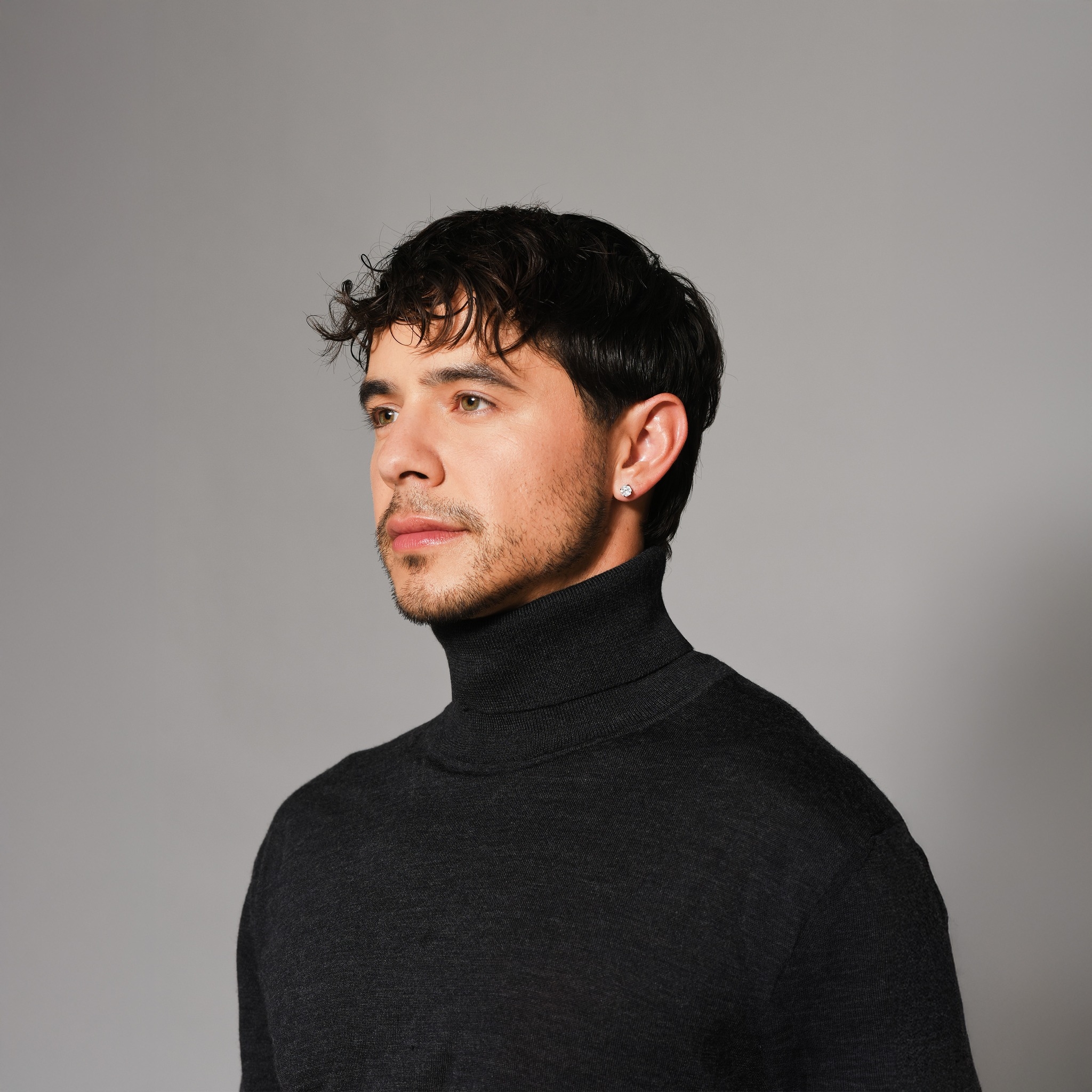
Even the rain couldn’t keep the crowds away as American Idol alum David Archuleta took the stage at The Abbey in West Hollywood, celebrating the release of his latest single “Freedom,” – an homage to George Michael’s iconic anthem. “Freedom” comes on the heels of the 35th anniversary of the original anthem and it couldn’t be more timely as the LGBTQ+ community continues to face political persecution. The song celebrates Archuleta’s newfound freedom after coming out and dealing with a complicated relationship with his Mormon upbringing, while exploring his sexuality.
Archuleta happens to have been born the year Michael released “Freedom.” His music served as an inspiration in Archuleta’s coming out. Michael’s music took on new meaning for Archuleta, celebrating a freedom that he craved for himself growing up. Being able to pay homage to Michael is a testament to the personal growth Archuleta experienced since coming out in an Instagram post in 2021.
“I’m finally free from worrying about what is right. Does that look okay? Am I within the lines I’m supposed to? None of that really matters. Of course, we want to still be good, but the things I thought I needed to do, or the way I had to behave or act or say or think to be good, I now realize was a construct that someone else had. They were very black and white and the community that I was in created this safe little space that worked to an extent for certain people,” said Archuleta in an interview with LA Blade.
“Now I realize that they didn’t have all the answers that they told me and convinced me that they had. Sexuality, especially when it comes to queerness, is not what they thought it was. I can go ahead and live my own life now and it’s okay to explore that sexuality and sensuality. I’m an adult. It’s the freedom to explore yourself and also create a new identity in yourself after trying to live someone else’s idea of what you’re supposed to be your whole life up until your thirties.”
Archuleta’s vocals are soulful and mature here. He pays homage to the original, but also makes it his own.
“I thought it was a great message to tap into. It is an iconic song with an iconic video and quite the story that he had. He was a pop star, a heartthrob, and didn’t choose to come out. He got outed and he just owned it. There could have been a lot of other ways to go about that and I feel like the way he did it was so powerful and made him even more legendary because he really tapped into his sensuality and continued to consistently be one of the greatest pop stars in the world,” said Archuleta.
“I tried to stay pretty true to his version. At first, we actually made a dance version of it but decided to backtrack from it and say, you know what? This is George’s legacy and it’d probably just be better to just stay true to his energy that he put into it. And also stay more true to my energy. I decided to stay true to an MTV unplugged version that he did with a choir. I have gospel roots. I still love gospel music even though I don’t believe in it and what it’s saying and the messaging like I did before,” he reflected.
“It used to be everything for me, the performance in the emotion and the way you connect in your core to singing. I thought it was a beautiful way to combine my two passions of moving forward and being free, but also loving the soul in music. I felt like there was some great soul energy in there. I was able to get really gritty, even get a lot of growling, something I haven’t done for quite a while, I feel like in my music,” he said.
“Freedom” comes at a time when every day LGBTQ rights are being called into question. The timing is not lost on Archuleta.
“I think it’s unfortunate that the LGBTQ+ community always has to be targeted because of being a smaller group. Living our lives does not really enter fear with anyone else. But because fear-mongering works in the news, it works in politics, it works in rallying people behind someone to feel like they have to fight this cause. They are blaming the community for issues and fear-mongering and feeling like the queer community’s a threat to families and to religion. When a lot in the queer community are religious. They are actively participating and fully believing and are a part of families. They have children of their own. It’s just strange that politics click baits and instills fear to not take responsibility for the real issues that are actually impacting people. We were making great progress. It was so much easier for me to come out when I did versus when George Michael came out and now it’s back to a place where the fearmongering is getting people, especially the trans community.”
Archuleta’s personal journey continues to evolve. He has certainly thrown off the shackles of being branded as the innocent Mormon kind on American Idol.
“I don’t really know what my brand is anymore. I think as I release “Freedom,” it’s kind of like a rebranding. I’m still me, but I’m still also evolving. I feel like I’ve changed so much in the last two years. I’m having a fun time. I keep trying to push my boundaries and say yes to things that I wouldn’t have before. Even to the point where I’m writing songs and writers will be like, “David Archuleta can’t say that!” I’m like, well, I just did and I’m David Archuleta. But people sometimes feel weird and I guess it’s because I’ve always been squeaky clean. I’m not a Mormon anymore. I’m out and I don’t really have this religious ideology that I have to abide by. I am David, but I don’t have the same limits on me that I had before.”
Archuleta has more new music on the way and this summer, he will release his memoir. Writing his book was bittersweet for David, revisiting his past came with a few bumps along the way.
“I feel like it was traumatic. I had to take breaks. It’s like opening Pandora’s box going into your childhood because I feel like sometimes I’m too honest. You see some of the faulty programming that you still have wired in you and you kind of question like, why am I still abiding by that? If it happened so long ago, why am I still letting it affect me? Why is it still part of my belief? I’ve had to work through a lot and it’s been a more difficult process than I thought it would,” he said.
“I thought it’d be hard to write because I didn’t know what I was going to talk about. But that wasn’t the hard part. What’s hard is processing the emotions, the anger, the grief, the anxiety, the traumatic responses you have. But it’s been good. I’ve definitely processed a lot of my religious things. I’ve processed a lot of my internalized homophobia and just sexuality in general. It’s been interesting to reflect on the root of all of those things. And not just ideologies, but just realizing it’s not just a belief, it’s sometimes your genetics that make you the person you are. A lot of good self-reflection for sure,” he continued.
Archuleta’s fanbase continues to thrive along with each evolution the singer has gone through. He is grateful for his fans and his mission to remain true to himself is also for his fans. There is sincerity and truth at the heart of his music.
“To my fans, thank you for being here still and for enjoying what I’m doing, for cheering me on as I grow, as I fumble. I didn’t think fumbling and making mistakes was okay to do. I thought that for some reason if you make mistakes, you’re supposed to be unforgivable. And to see how forgiving of a following I have to let me learn and to experiment and to explore. That’s why I relate to George Michael’s “Freedom” because he had to explore in front of people. And of course, you want to keep parts of your life private, that’s what I prefer. But sometimes things just end up being people’s knowledge that you don’t even know, like processing religion and coming out, sexuality and dating and getting to know people and even learning how to be physical with someone,” he said.
“I’m going to continue trying to figure myself out. But for people to be excited and for me to finally have this part of time of my life is great. I just hope we continue having fun, unleashing more, and freely being ourselves and giving us the grace to figure that out even if it takes some time,” he concluded.
“Freedom” is now streaming on all major music platforms.
California
Community leader reflects on loss from the Eaton Canyon fire one month later
‘Showing up for community is actually very political’
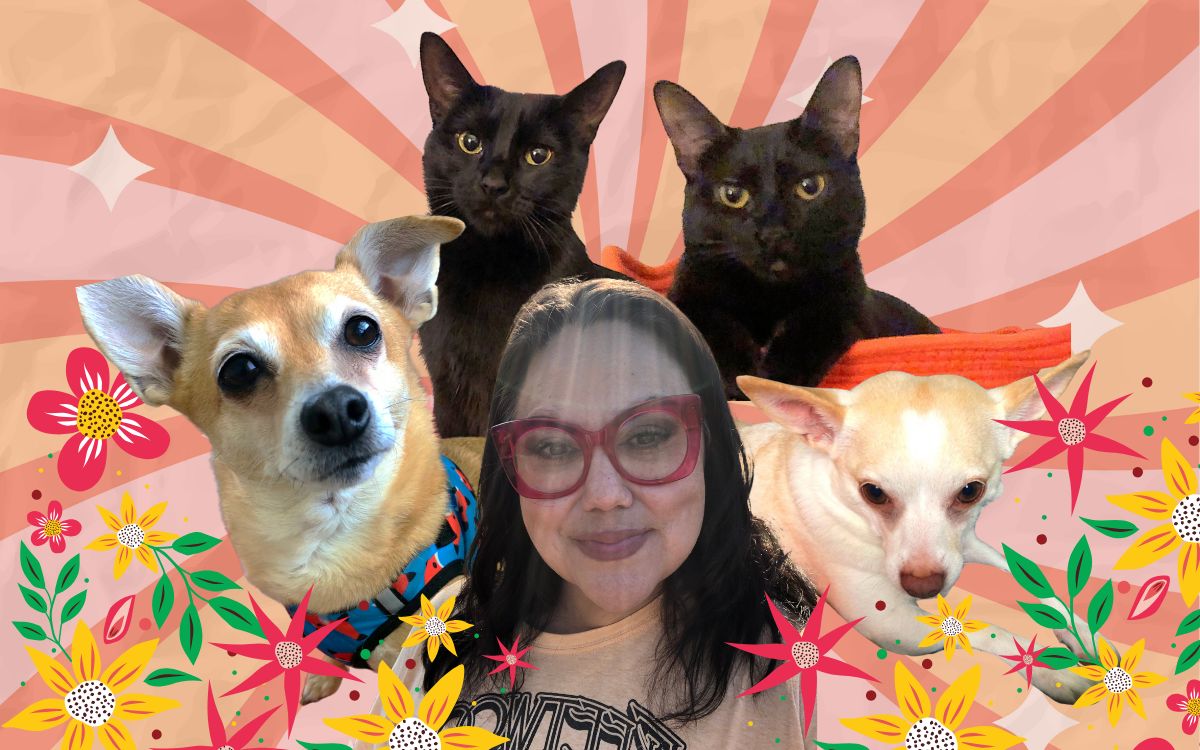
Melissa Lopez, 46, was at home with ‘the coven’ – her two dogs Foxy and HoneyBee, and her two cats Stevie Nicks and Dulce – when she got a notification from Southern California Edison saying there might be a possible power shut-off in her area on the morning of Jan. 7.
Lopez lived right off of Lake Ave., in Altadena – a city that sits at the bottom of the Eaton Saddle near Mount Markham and San Gabriel Peak in the San Gabriel Mountains, part of the Angeles National Forest.
The fire stretched across 14,000 acres over the weeks it took to contain it. The latest report released on Jan. 27 by the LA County Fire Dept., listed 17 civilian fatalities, nine firefighter injuries and thousands of threatened, damaged and destroyed structures as casualties of this fire.
Lopez’s was one of the structures that was destroyed shortly after Lopez and her four pets evacuated.
She recalls that she was watching the news about the Pacific Palisades fire when the reporter got notice that there was a fire starting up in Eaton Canyon, announcing it live on the news. At that moment Lopez felt her stomach drop.
“The second I heard that, my stomach just dropped, because when you live in Altadena, you kind of get notices of brush fires all the time. But, I knew this time was different because of the intensity of the wind,” recalls Lopez.
Lopez, whose pronouns are she/they, is a licensed clinical social worker and mental health therapist who works primarily with queer clients in the Los Angeles area. They also have over 100 thousand followers on Instagram as @counseling4allseasons, where they regularly post and repost memes and educational material that is relatable, relevant and helpful for queer, trans, BIPOC, disabled and otherwise marginalized people. Lopez is known as a community leader who has been actively outspoken about issues that are intersectional with race, genocide, immigration, capitalism, patriarchy, queerness and mental healthcare.
At the time of the interview, Lopez was having a particularly hard day as it was the one month mark since the start of the fires that burned through Altadena neighborhoods.
“Today is a hard day. It’s the one month anniversary of when I evacuated Altadena,” said Lopez in an interview with LA Blade. “I feel really pissed today. I’m pissed that so many things happened that could have been prevented.
Lopez recalls that on Tuesday Jan. 7 when the Santa Ana winds were blowing the strongest, she received the notification about the power possibly being shut off, but during the time leading up to her evacuation, she recalls that the power was never shut off. All the other alerts she received came after the fire had already started.
As she was preparing to evacuate, she says that she was in communication with many of her friends and nearby neighbors.
“It was really confusing because I was texting a couple of people and some were saying they hadn’t received [a notification], while others had,” said Lopez.
At that point, their own instinct and intuition led them to make the ultimate decision to begin evacuating.
“Everything’s kind of a blur, but I started to just grab the dogs and cats,” they said. “So I started getting all of their supplies like their food, litter – everything they use.”
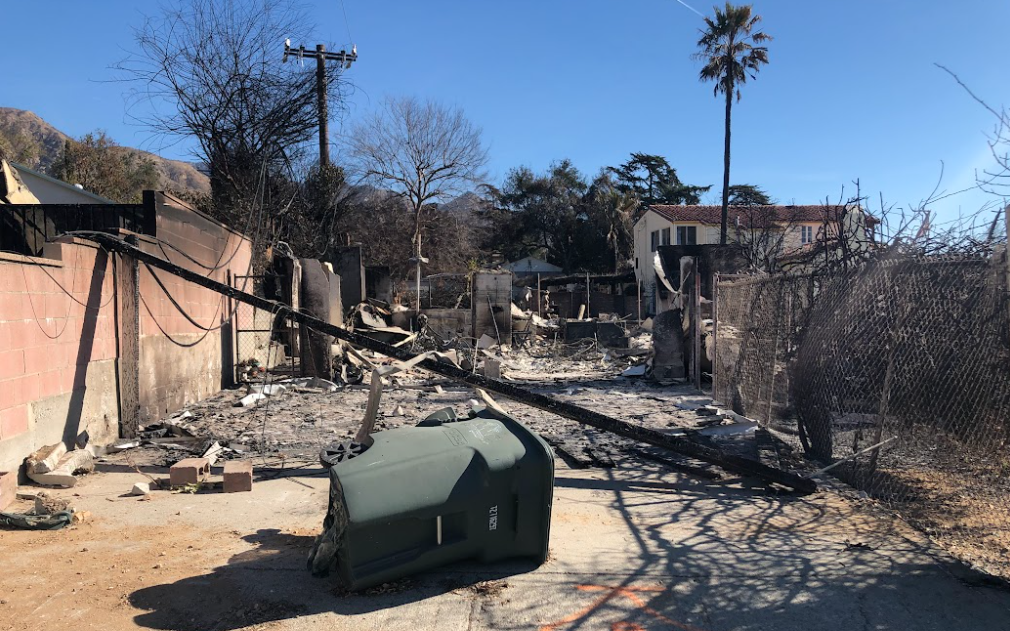
The aftermath of the fire on the property that Lopez rented a back house in (Photo courtesy of Melissa Lopez).
As soon as she was able to find short-term housing through AirBnB, she began organizing a group now led by a colleague of Lopez, to help people who had been directly affected and displaced by the Eaton Canyon fire. In the group, they discussed the experience of making the decision to take the evacuations seriously and begin gathering their belongings. She says she even felt ‘silly’ at some point, because she believed she would just be able to return the following day.
“What I tell people now is that I don’t care how silly you feel. I don’t care if you pack up half your house and feel silly about it. If your house ends up burning down, you will be so grateful for it because there are so many things I wish I would have taken.
Though Lopez says they don’t remember an exact timeline, they remember seeing the fire move in really fast and by the time she began evacuating it was complete chaos out on the main streets of Pasadena and Altadena because of the hundreds of people evacuating.
“Some of us had gotten notices, some of us warnings, some of us hadn’t,” Lopez recalls the confusing ordeal.
The smoke began to cloud the area so Lopez put her dogs into her car, but struggled to get her cats into a carrier and one of them was almost too scared to grab. She was able to make it out of the danger zone with all four of the members of ‘the coven,’ as she likes to call them.
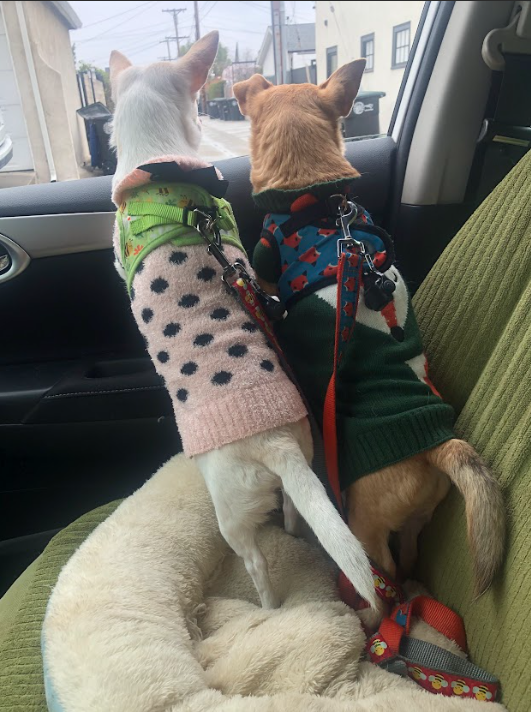
Lopez gathered her coven and evacuated, saying goodbye to many of her belongings (Photo courtesy of Melissa Lopez).
“I had a friend who was going to take us in who lives in San Marino and driving there is basically a straight shot, but because it was so windy, some trees had fallen over and some of the [street] lights were out, so it was all really chaotic.”
Lopez believes that the community support she has received since the evacuations has gotten through the hardest parts of the experience. Mutual aid came to Lopez’s rescue during this difficult time. Navigating the resources and legal assistance was incredibly difficult because of the stress, trauma and grief she is still currently experiencing.
The Eaton Canyon fire burned through a large part of Altadena, an area that is predominantly and historically Black, Latinx and working-class.
“I think it’s important for folks to remember that showing up for community is actually very political,” said Lopez. “I want to encourage people to show up and even if you don’t know people, show up. Even if you don’t f*cking like people, show up.”
Lopez says they are very grateful for the community that showed up for them and that it is not only important to show up for this current disaster, but for everything marginalized communities are currently facing. They received many messages on IG from people offering their support in a variety of ways and that was all impactful to Lopez. They say that a lot of the support they received was from people they directly and personally knew, but a lot of it also came from people who were complete strangers.
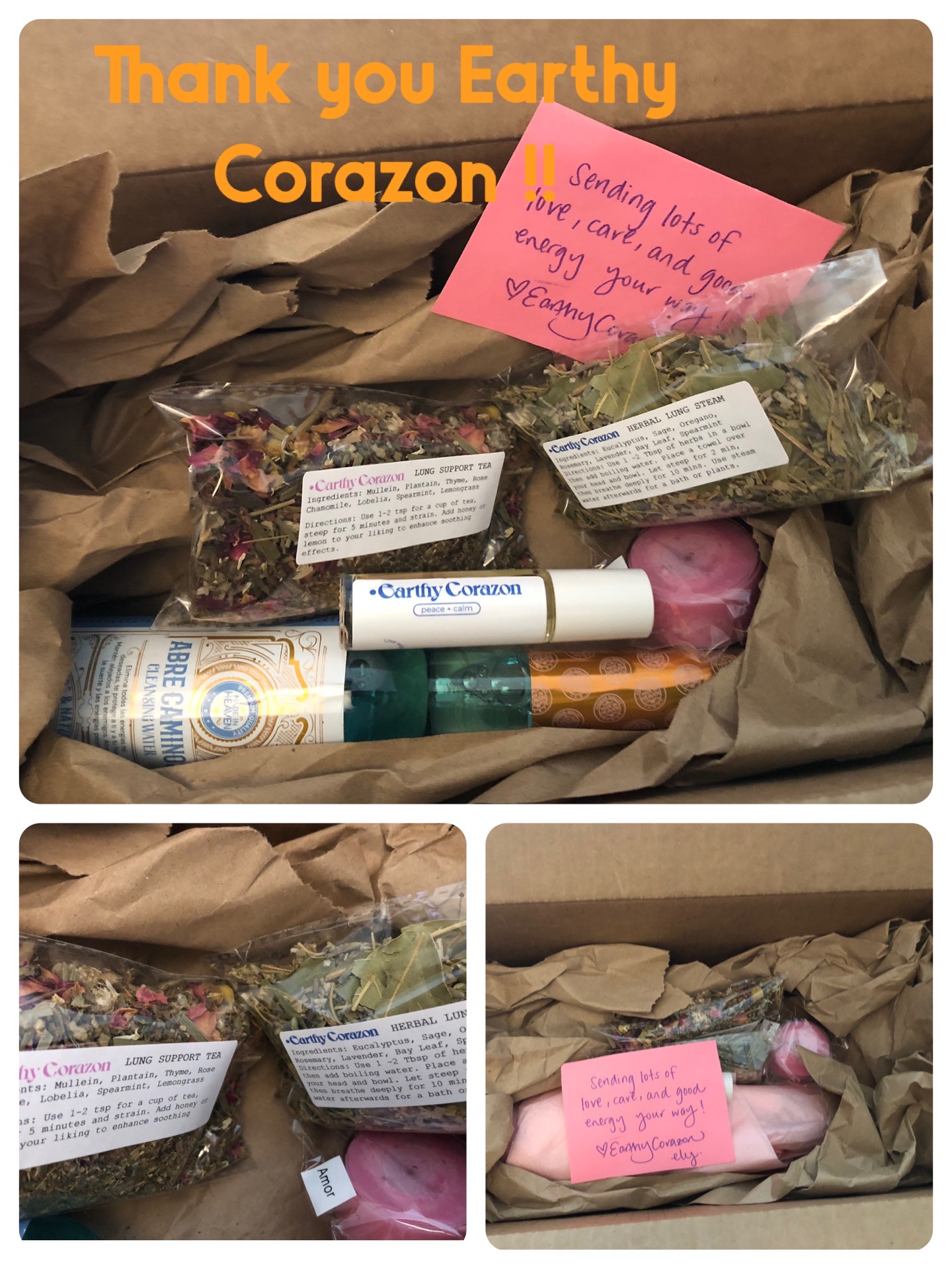
Lopez received holistic healing care packages from businesses like Earthy Corazón (Photo courtesy of Melissa Lopez).
In Lopez’s case, she was able to get her monthly rent for January and security deposit returned. She says she realizes that this is not the case for most people who are also navigating the aftermath of this disaster.
“I do want to highlight that I think tenants are having a really hard time because a lot of the resources and a lot of the support goes to homeowners and that is obviously a huge class issue,” said Lopez. “One thing I tell people now is get the f*cking renters insurance.”
The cause of the fire that took weeks to fully contain is still under investigation and many renters and homeowners await answers from insurance companies on their long path toward justice and permanent housing.
Features
Out at the Fair Kicks Off Pride Season In SoCal
OATF continues to forge ahead with queer representation at local county fairs

Though the LGBTQ+ community is under attack day after day, queer organizations are not giving up the fight and instead are choosing to forge ahead with an even louder voice. Out At The Fair (OATF), is kicking off LGBTQ+ event season with a bang this week. Since it began in 2011, Out at the Fair has become the official LGBTQ+ event of the fair industry.
This year’s season starts at the Riverside County Fair & National Date Festival on Saturday, February 15th at 11 am. The Glam Show will feature a performance from Drag Race alum Scarlet Envy, who also appeared in the franchise’s All Stars and UK vs the World iterations. In addition to a number of California dates, OATF will appear in New Mexico, Oregon, and Alaska.
Simply put, it is a day the queer community gathers and takes over stages at your local country fair. This year Out At The Fair will appear in 13 cities in four states. The organization provides visibility for the LGBTQ+ community and creates an inclusive day at the fair with main stage music performances, drag queen story time for youth, community resources, health resources, giveaways, family-friendly activities, and a grand finale Glam Show featuring drag performances.
In this LA Blade exclusive, we chatted with Out At The Fair CEO and Founder William Zakrashek. Coming from a nightlife and DJ background, Will and his partners have kept OATF going strong, despite political and queer-phobic setbacks. The production team that travels on the road to each of the Fairs has been pretty much the same from its inception, a testament to the mission and professionalism of the organization.
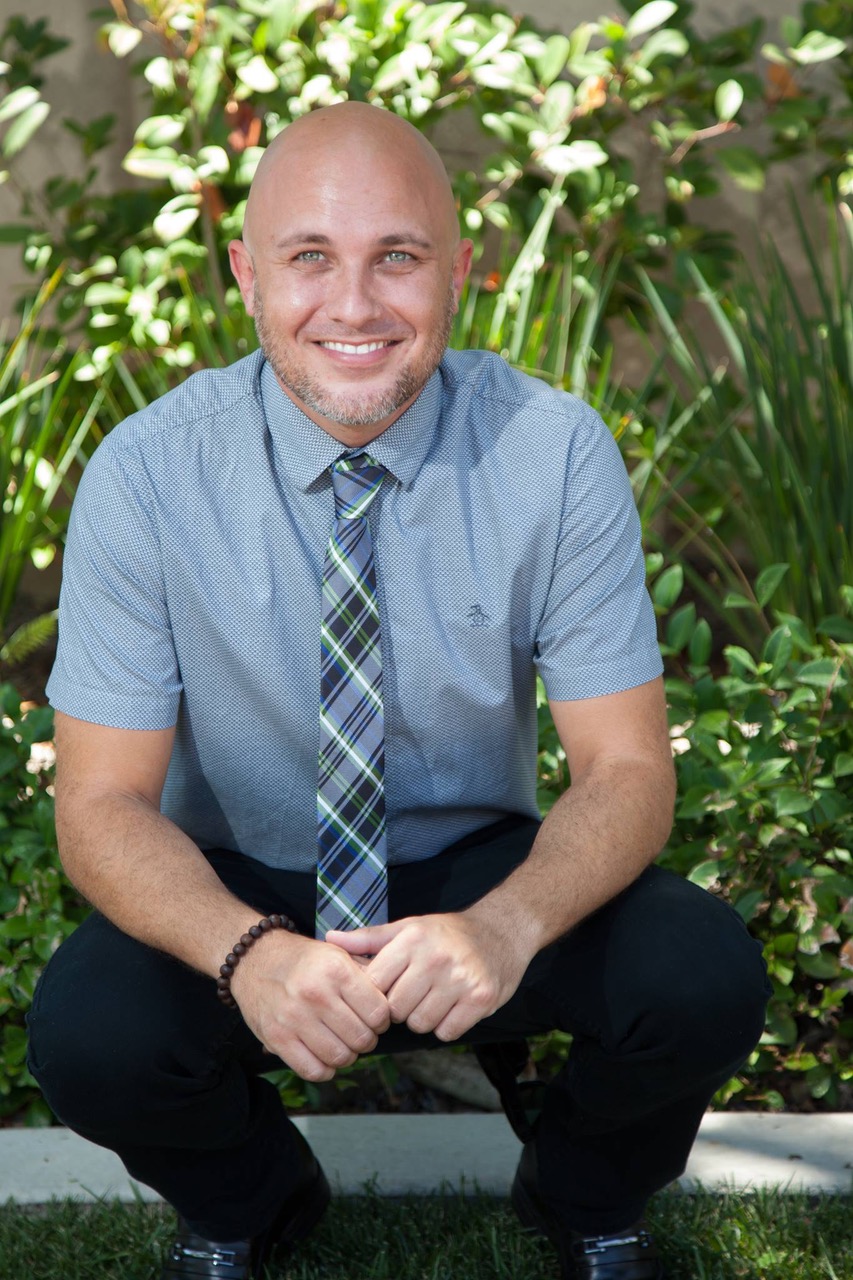
OATF Founder William Zakrashek (Photo courtesy of OATF)
What was the inspiration to start Out at the Fair?
In 2011 we went to the San Diego County Fair and noticed there was no representation of the LGBTQ+ community so we just checked in on social media calling it the “Unofficial Gay Day.” Honestly, we didn’t think anything would come from it until the following year I got a message on social media asking if we were doing the gay day at the Fair again. We made an official Facebook event that year calling it the “Unofficial Gay Days” and were invited by Luis from Marketing at the SD Fair. They welcomed our full group to the fair, gave us pins, and took our photo. The following year I was invited to official SD Fair planning meetings and the vision of Out At The Fair came together and the rest is gay history now.
What have been your biggest challenges in producing these events?
Out at the Fair has to transform a conservative industry while changing the perception of the county fairs to our community. Because of the family-friendly nature and conservative backgrounds of Fairs, the queer community hasn’t felt like they can be themselves. I have to say with years of work, it is now. Every location with an OATF not only showcases our community to the full Fair but now welcomes the community to events at the Fair, 365 days a year. We hear from our Fair partners that the uptick in our community coming to the grounds beyond just county fair time had a huge increase.
Have you had any pushback from the straight, conservative community with OATF’s presence?
We have had the normal pushback that Prides get with protestors outside of the gates or rude verbiage from someone walking by our booth, but it has never been anything where we have felt threatened. We have a rule at the booth, if someone is video recording you and you do not feel comfortable, video record them back so we can handle it with the Fair teams. We work so closely with locations to make sure every year we get better and better at creating that safe space.
But sometimes, that pushback comes from inside the Fair industry from production crews that do not have the same values as OATF. They limit their responses, limit the info we get to pass on to our partners and come up with any way possible to make it harder for us. The problem with their plans is that our Fair partners know about these struggles so it will only hurt their own relationships in the end.
What have been some of the biggest achievements of Out at the Fair?
Out At The Fair won the highest business award from the Fair industry called the Barham Award in recognition of our reliability and excellence in what we do. But the awards aren’t the real achievements we have made when it comes to progress for our community. We have created the first LGBTQ+ safe spaces in some of Fairs’ histories (some over 100 years!), producing stages, bringing drag to the fairs, and building out a foundation for a real connection. This summer we will be doing our furthest north Glam Show 160 miles south of the Arctic Circle in Fairbanks, AK! It’s pretty incredible the opportunities we can open up to our talented community that wasn’t there before.
You travel with your crew from city to city, what are the realities of life on the road?
Where do I even start? You better love your business partners and understand that the privilege of privacy during Fair season isn’t a thing. I have to say, don’t eat a Subway at a gas station because we have seen food out at 2 AM while taking a pee break. Tuna fish needs a fridge. We have to haul a trailer with us from location to location for all the setups, so between sleeping in the truck on the side of the freeway with our two dogs or hitting an elk in the middle of Arizona at midnight on our way to New Mexico, the event must go on. Even when the state trooper is telling us to stay at a hotel, we had to push on with part of the front end missing on the truck and elk fur all over it. Albuquerque or Bust!
I think the craziest thing I have seen was after driving back from Oregon last summer when we took the Nevada way because the 5 Freeway is no fun with a trailer. But there was a massive fire north of Sacramento and it took us six hours to drive through the smoke while it rained ash on us. We really get to see all parts of this country while driving through it.
What do attendees walk away most with?
A real sense of humanity. Life has just been so crazy in the past years and seems to be staying on that trend. The love and feeling of acceptance that happens during an OATF day is hard to describe. When you see people who obviously had no idea it was the LGBTQ+ stage area but sat down, started watching talent, and never left, is a great thing. It’s really cool to be able to showcase our community to people who wouldn’t go to a Pride since the Fair is such a mix of the general public.
In addition to scheduling well-known national performers, you work with the city’s local queer talent. What have you learned from working with entertainers out of town, how does their queer experience differ from Southern California’s?
This is my favorite part of doing this type of event. We really do try to create programming that fits each area we serve. Drag is just as different in New Mexico as the mix of music you would expect on the stage from our festival at the San Diego County Fair. There is some amazing talent in rural areas that need to be showcased more and I am so proud we are able to give those chances. From artists in New Mexico, Oregon, California, and Alaska, the one thing they all have in common is the appreciation of being given a platform none of them thought was possible.
OATF kicks off this season at Riverside County Fair, what can audiences expect?
This OATF is always the first Pride day of the year in California and 2025 is our 3rd Annual Celebration in Indio, California, and will be our biggest yet! We are thrilled to have RuPaul’s Drag Race superstar Scarlet Envy headline our Glam Show, Drag Race guest-judge Deven Green host our OATF Bingo, and a full day of family-friendly entertainment on the Pageant Stage. You can even catch the first LGBTQ+ Mariachi group perform & grab the full family for Out At After Dark w/ DJ Lotus for our all-ages dance party. For the first time, there will be an ‘All-Inclusive’ bar on site presented by KGay Radio and we will have some amazing local queens to mingle with. Make sure you stop by the Out at the Fair® booth because Butler Amusements is partnering with us and the first 150 people will get a ticket for a free Ferris Wheel ride. We really do try to build programming for everyone & showcase the community. Check out everything going on our website today.
How will 2025’s Out at the Fair be different than past years?
There are some locations in rural America that aren’t ready for drag shows and queer artists BUT that doesn’t mean their fair doesn’t support what we do & our community. So, for the first time in 2025, we will have Safe Space locations. We want to build a space that is safe for the LGBTQ+ community in areas where it was never possible.
Why is it so important to have a queer presence at Fairs?
It is so important because there is a fair in everyone’s backyards and those were made to showcase the community they serve. Our community lives in every neighborhood, town, and rural corner of this country and they all deserve to be celebrated. There are also queer people inside the Fair industry who have never been able to perform as out performers. We have had a few bands tell us that until we were around and helping change the perception of the LGBTQ+ community, they had never performed before as themselves. From 4H kids to vendors, and office workers, there are literally queer people everywhere and it is an honor to make them finally feel welcome in an industry that never really embraced us.
An example of this was in Oregon, where we met a trans community member who had transitioned between the Fair season but wasn’t going to come back to work until they realized OATF was now at their Fair. Even the guests who don’t have a supportive family at home feel that the Fair is the only place they can be themselves. In Sonoma County, we had a few youths stop by our booth, and grab rainbow flags, but put them quickly into their bags. We asked them why. They told us that their family doesn’t approve of them wouldn’t approve of them being there and thanked us for having a welcome space. They quickly turned around and ran away down the midway.
How are the political changes toward the LGBTQ community going to affect Out at the Fair?
For now, we are seeing the people who didn’t align with our ideals be more vocal. We have also experienced an unfortunate downtick in sponsorships. We will keep pushing through! No matter what the ‘rules’ these new political times bring, Out At The Fair will always be a safe place for the full LGBTQ+ community. We also have been working closer than ever with our Fair partners to ensure the safety of these spaces. An example is Riverside County Fair will have the Riverside County Sheriff on site, Indio PD on the perimeter, their own private security, and Fire & Medical onsite. If you see something, say something so we can keep every public event safe this summer for everyone.
How can our community support the efforts of Out at the Fair?
Come to an Out At The Fair this year, we would love the in-person support and your presence speaks volumes nowadays. But if you can’t make it to one of our 13 locations in 4 states, we do have merchandise available online starting at $7 and 100% of these proceeds go to the OATF tour. It helps us to give the smaller Fairs the same production & attention as our largest Fairs. Visit www.OutattheFair.com to learn more about what we do & shop our merchandise line.
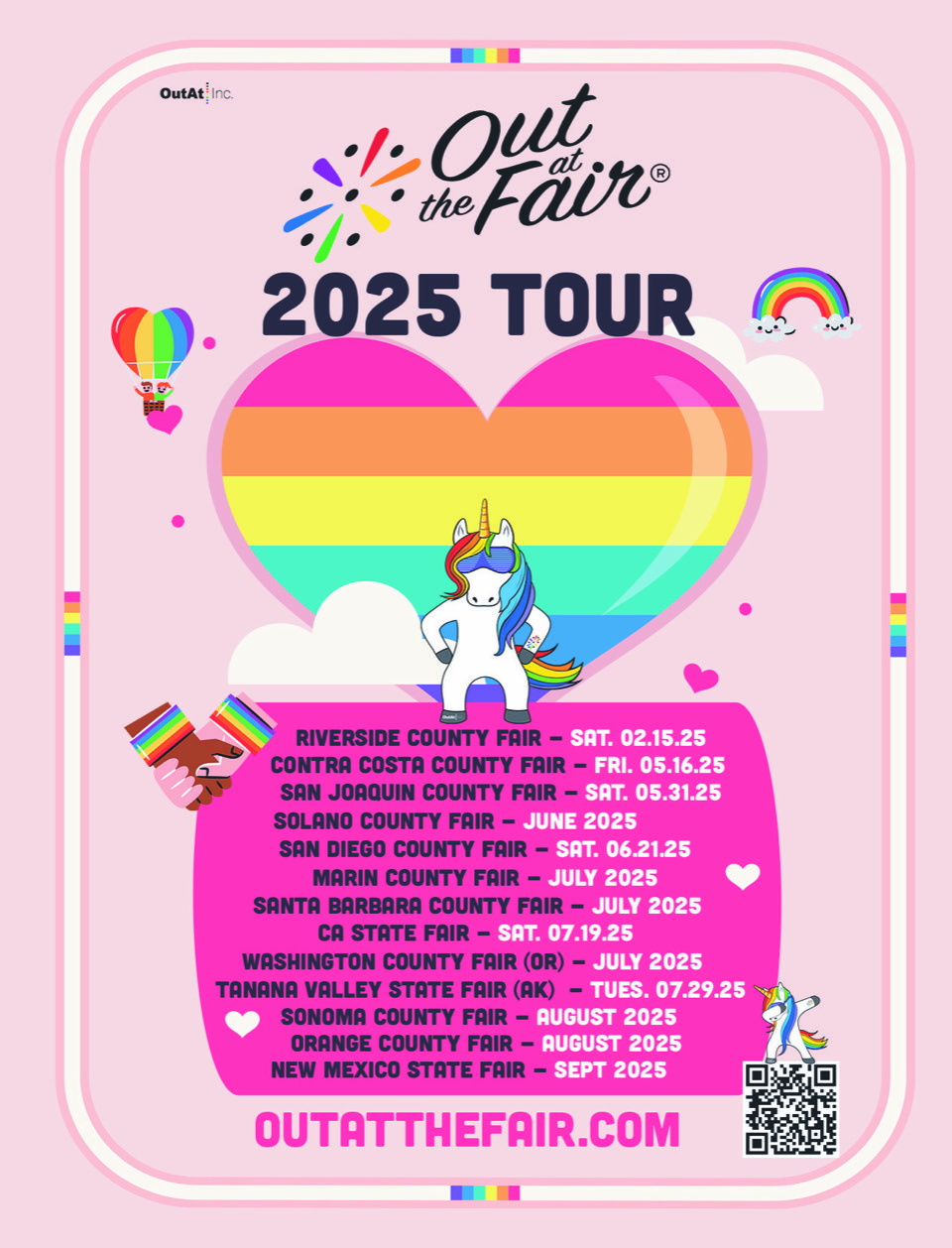
OATF Tour 2025 flyer (Photo courtesy of OATF)
-
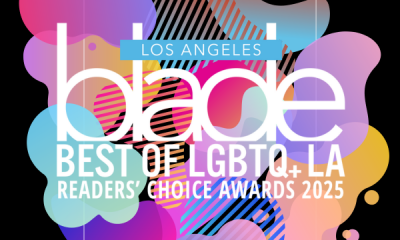
 Arts & Entertainment2 days ago
Arts & Entertainment2 days ago2025 Best of LGBTQ LA Finalist Voting
-

 Books4 days ago
Books4 days ago‘Pronoun Trouble’ reminds us that punctuation matters
-
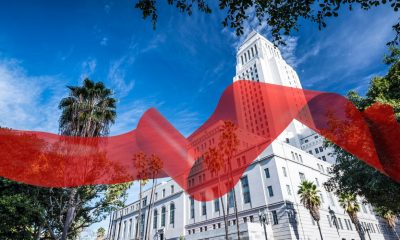
 Local2 days ago
Local2 days ago‘Housing Now!’: Advocates plan to wrap City Hall in red tape
-

 a&e features1 day ago
a&e features1 day agoAnthony Nunziata Performs the Great Palm Springs Songbook
-
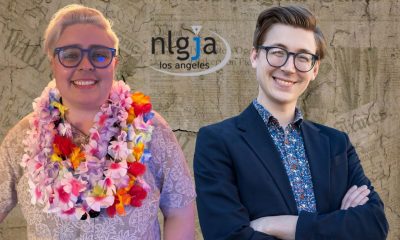
 Features6 hours ago
Features6 hours agoMeet the new co-presidents of the NLGJA LA Chapter
-
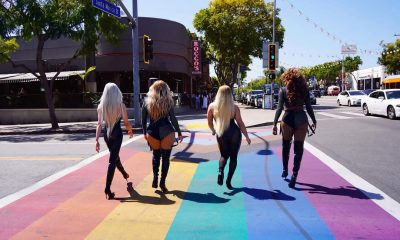
 Bars & Parties1 day ago
Bars & Parties1 day agoRocco’s 2.0 is looking to the past to celebrate the future
-

 The Vatican2 days ago
The Vatican2 days agoPope Francis dies at 88
-
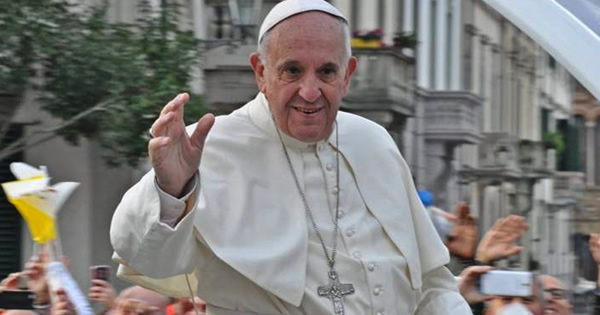
 Commentary1 day ago
Commentary1 day agoOn Pope Francis, Opus Dei and ongoing religious intolerance
-

 Congress12 hours ago
Congress12 hours agoDemocratic lawmakers travel to El Salvador, demand information about gay Venezuelan asylum seeker
-

 Autos3 days ago
Autos3 days agoSporty sedans: BMW 530i xDrive, Mercedes AMG CLA 3
